Cetaceans, sharks, rays, sea turtles, seabirds
The island of Moorea, in French Polynesia, is home to a rich and preserved wildlife thanks to the presence of diverse marine ecosystems such as coral gardens, lagoons, and the open sea surrounding our island. Moorea Ocean Adventures is dedicated to observing this marine life from our boat or while snorkeling. We place particular emphasis on iconic species, which can only be observed in suitable conditions and in a respectful and sustainable manner through small group encounters. Below are some of the most iconic species we encounter during our tours. This is, of course, not to mention the myriad of tropical fish, coral, and other colorful creatures that inhabit the reefs.
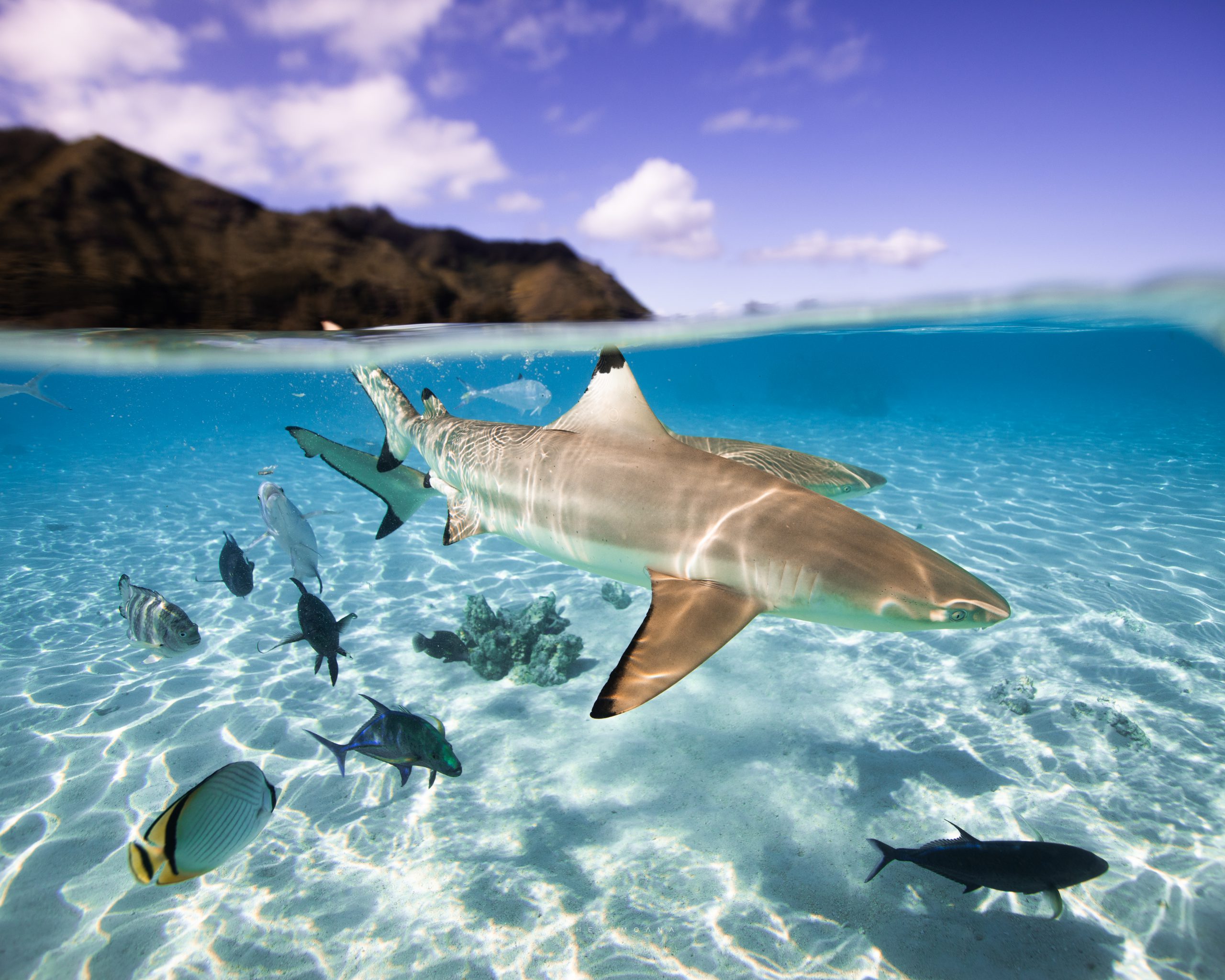
Blacktip Reef Shark
The blacktip reef shark, like the stingray, is an iconic species of the Moorea lagoon. These small reef sharks, approximately 1.7 meters long, play an important role in the ecosystem by regulating fish populations. We encounter them everywhere, in the lagoon as well as behind the coral reef, and they are curious, shy, and magnificent.
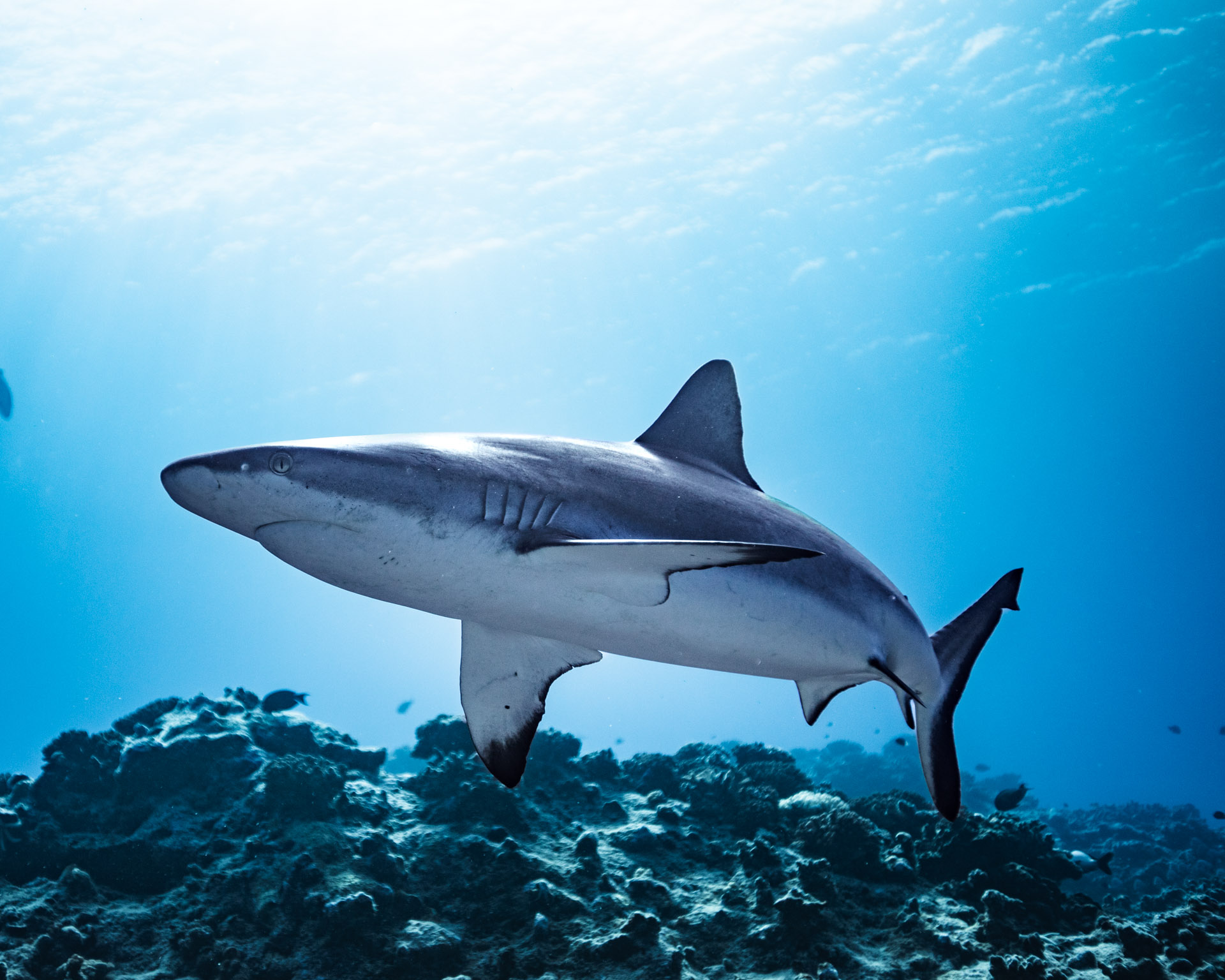
Grey Reef Shark
Polynesian fishermen are familiar with this species, called "raira," which is curious about swimmers and sometimes inquisitive toward spearfishermen. This territorial predator is, after the blacktip, the most common species in Moorea, although rare in the lagoon. It can reach over 2 meters in length, making your snorkeling a unique experience!
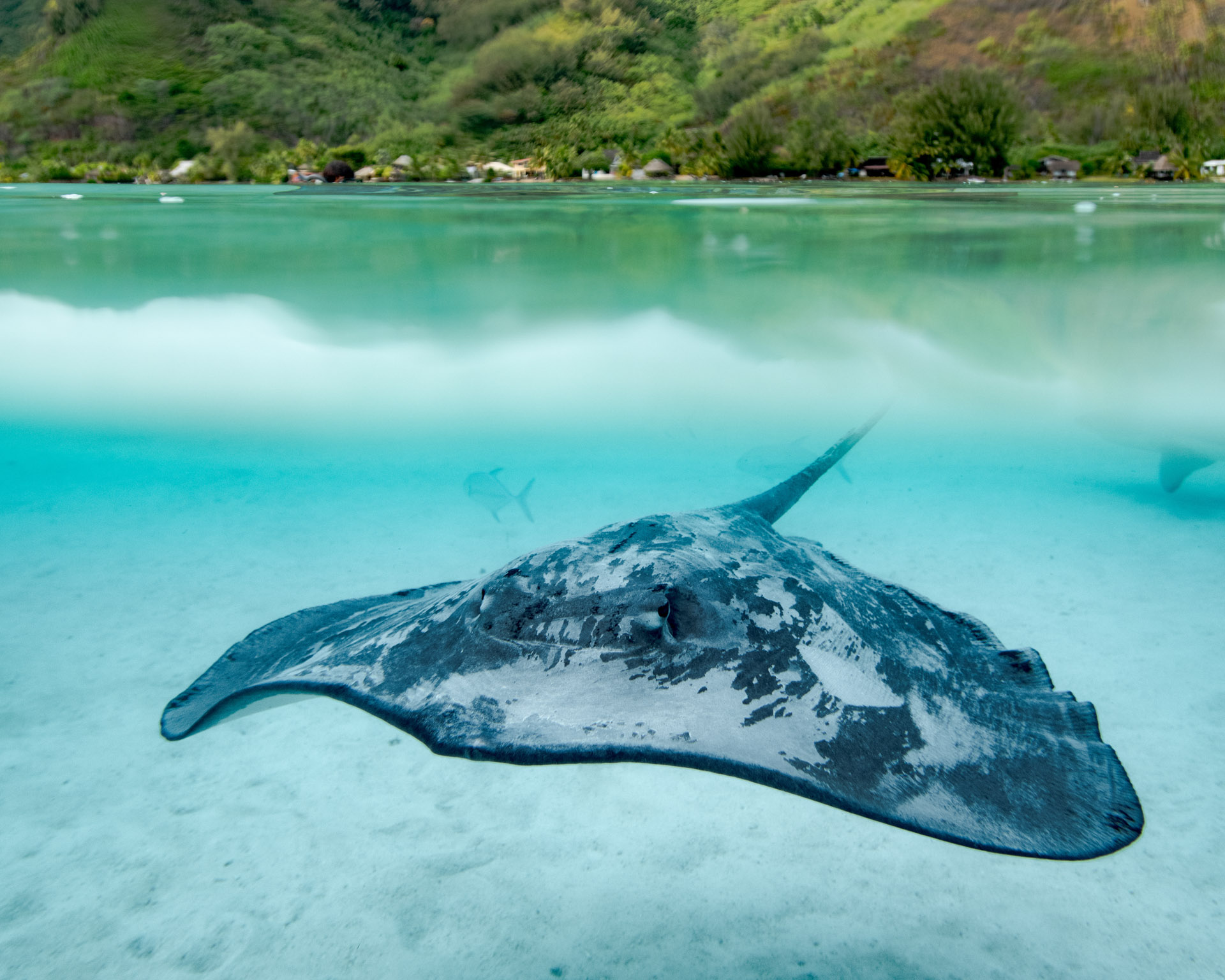
Pink Whipray
This species is a must-see on all our ray and shark tours. Reaching over 1.2 meters in diameter, this stingray feeds primarily on invertebrates and small fish it finds in the sand. An icon of Moorea, this species is not protected but is not subject to any fishing as it is so respected by the Polynesian people.

Hawksbill Turtle
A species classified as critically endangered worldwide, the hawksbill turtle has found a peaceful place to live and feed in Moorea. Quite curious toward divers, hawksbill turtles are not difficult to approach and are an ideal subject for underwater photography and video. They are found both in the lagoon and on the outer slope, where they search for the sponges on which they feed.
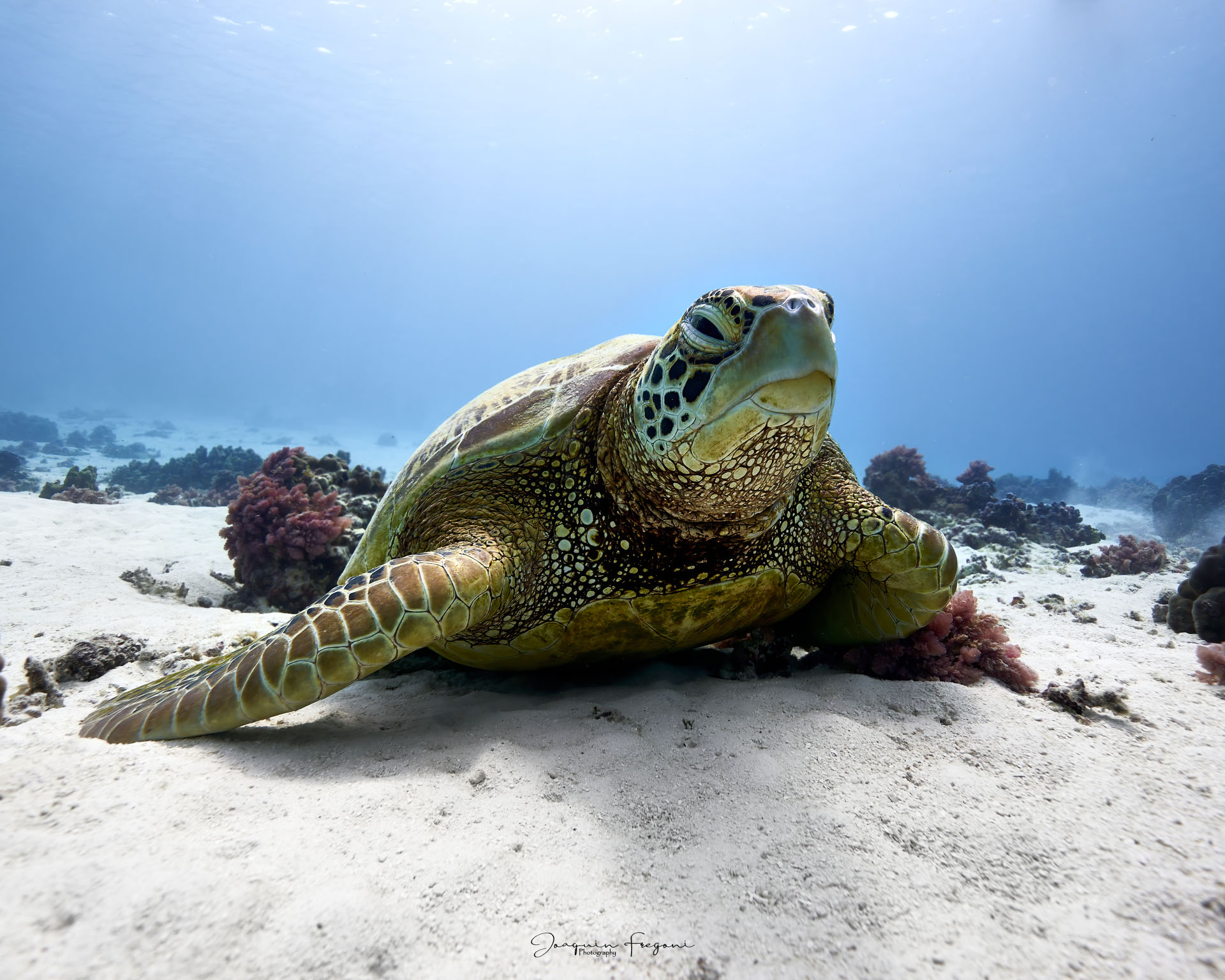
Green Sea Turtle
This is one of the two main turtle species encountered during our tours. Often seen sunbathing at the surface, it can also be encountered underwater feeding on algae on the reefs. Adults lay around a hundred eggs each year on the white sand beaches of Polynesia. Still regularly poached for its food, this species is protected and the subject of numerous conservation efforts.
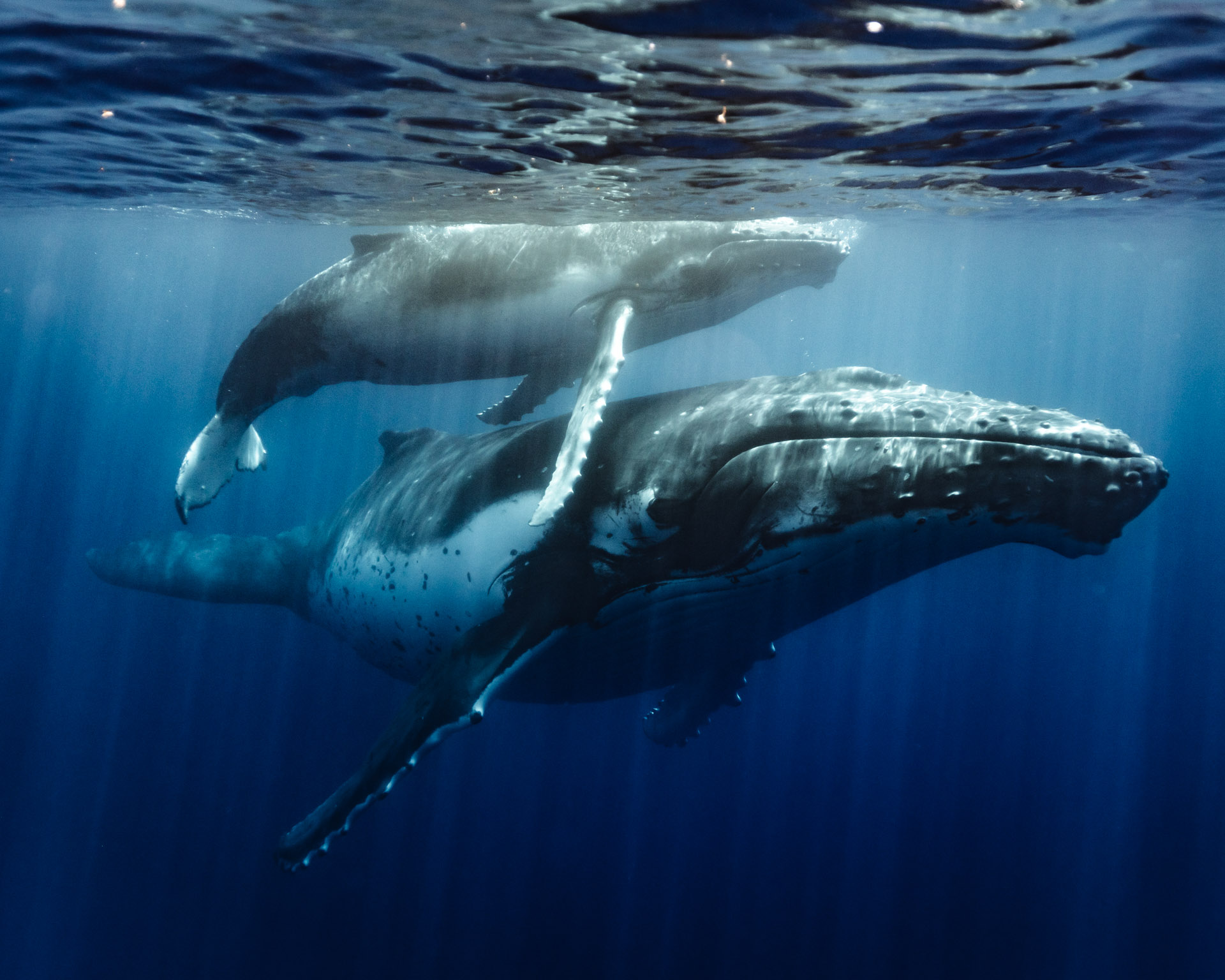
Humpback Whale
Reaching up to 18 meters long and weighing 40 tons, the humpback whale is the main whale species in Moorea. The whale population that visits Moorea and Tahiti makes a 6,000 km migration from Antarctica each year. They find a peaceful and warm place in Polynesian waters to mate and give birth to a single calf, which already measures 4 meters and weighs 500 kg at birth. After several weeks of learning and nursing, mother and calf will be ready to return to the polar waters of Antarctica to hunt for krill.
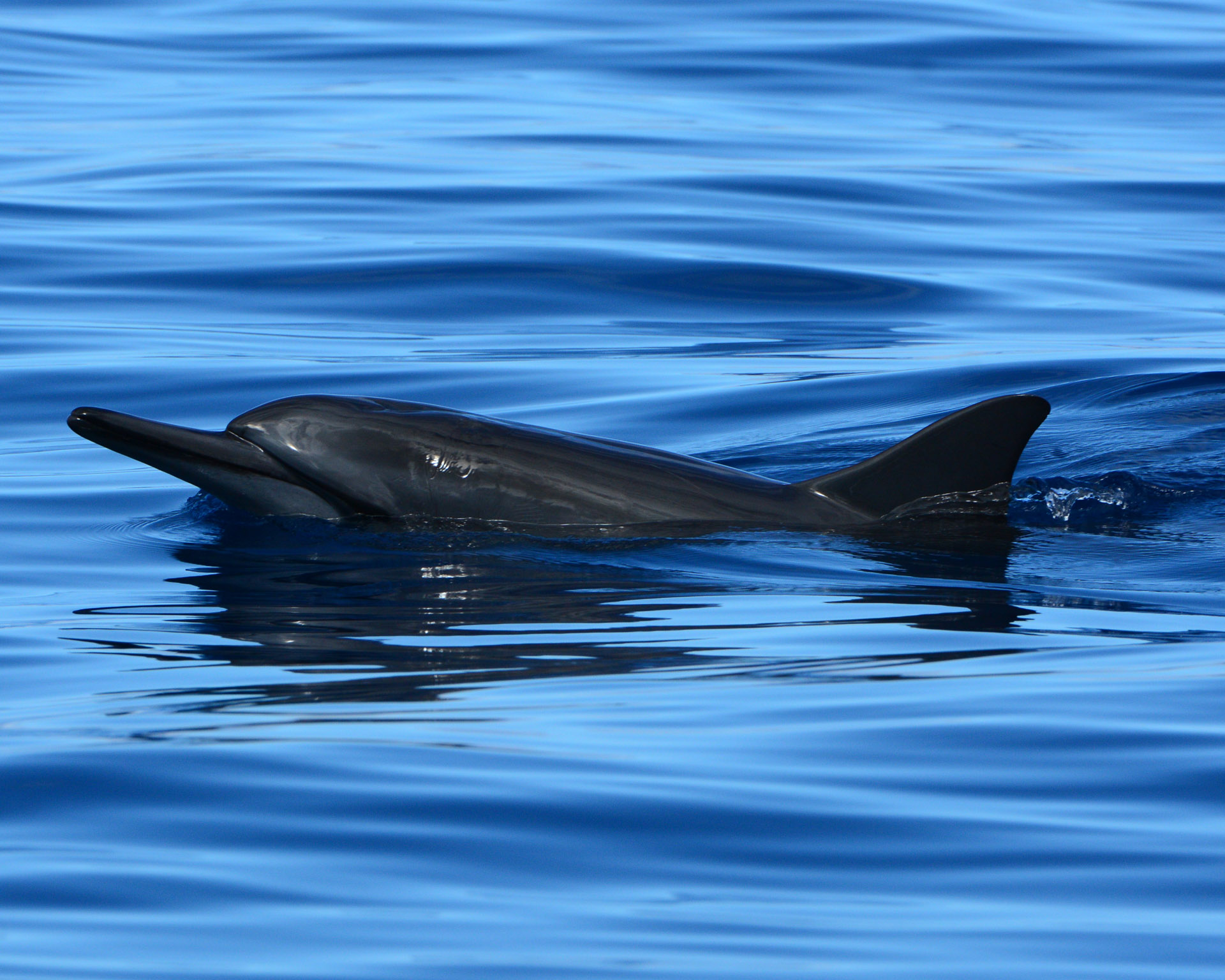
Spinner Dolphin
This dolphin is the smallest cetacean species found in Moorea, reaching only 1.5 meters in length. Moorea Island is home to a resident population of 160 to 300 spinner dolphins, which can be observed year-round. In the morning, these dolphins are often encountered in bays and lagoons, where they enjoy a well-deserved rest after a night spent hunting fish and squid offshore. These dolphins are often not very fearful of boats, and when they come to surf near the boat, we took the opportunity to recognize them by their unique dorsal fin.
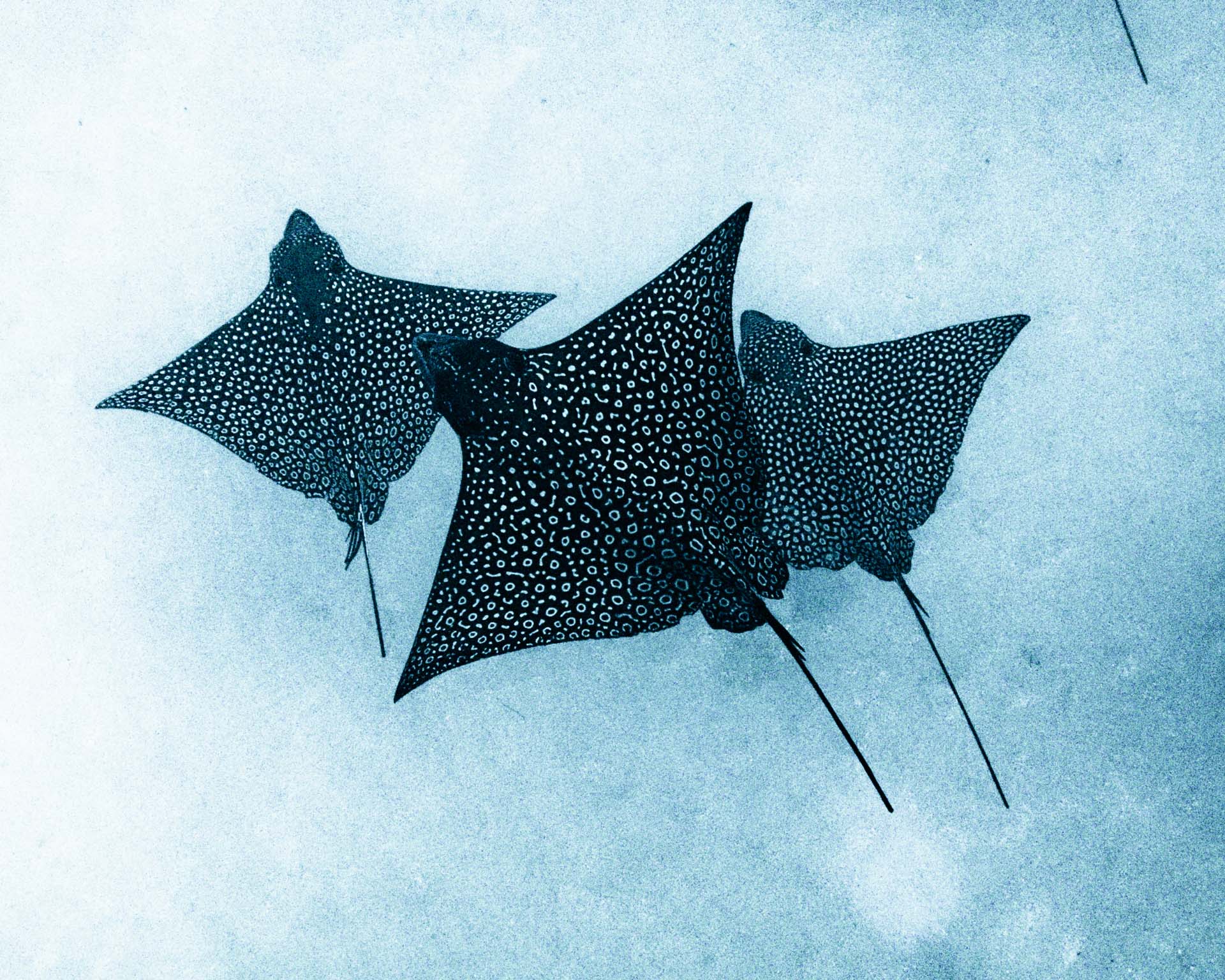
Eagle Ray
Also called the leopard ray, its swimming action is truly reminiscent of a bird's flight. Frequently observed in passes or channels, this species feeds mainly on crustaceans found on the seabed. Like the stingray, it has venomous stingers at the base of its tail to defend itself against hammerhead sharks, its main predator.
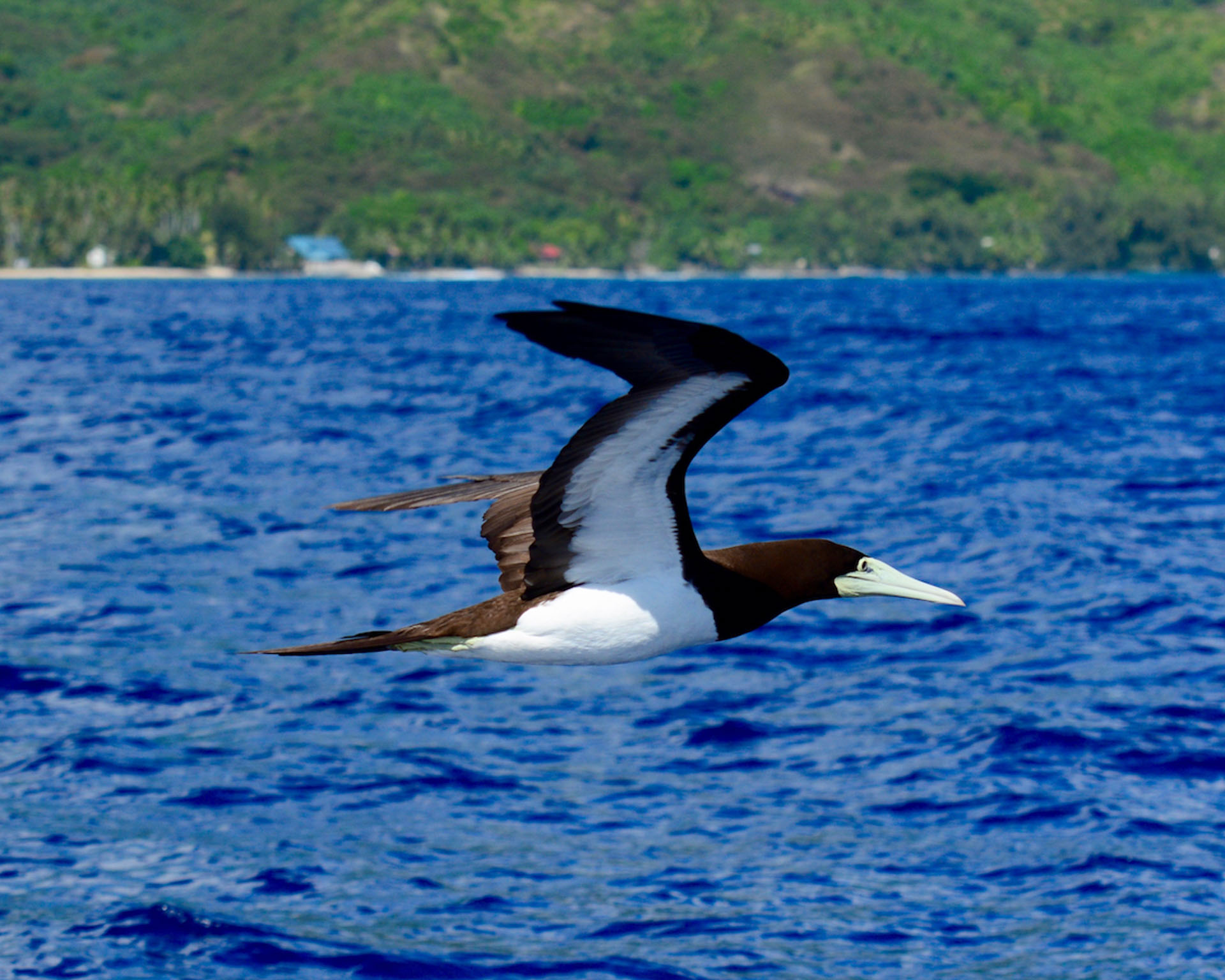
Brown Booby
Boobies are often encountered hunting schools of fish and squid in the open sea, detecting them with their polarized vision. They don't hesitate to dive several meters below the surface to catch their prey! The sight of a red-footed booby chasing a flying fish or a brown booby perched on our engine are all opportunities to understand the fascinating lives of these sea adventurers.
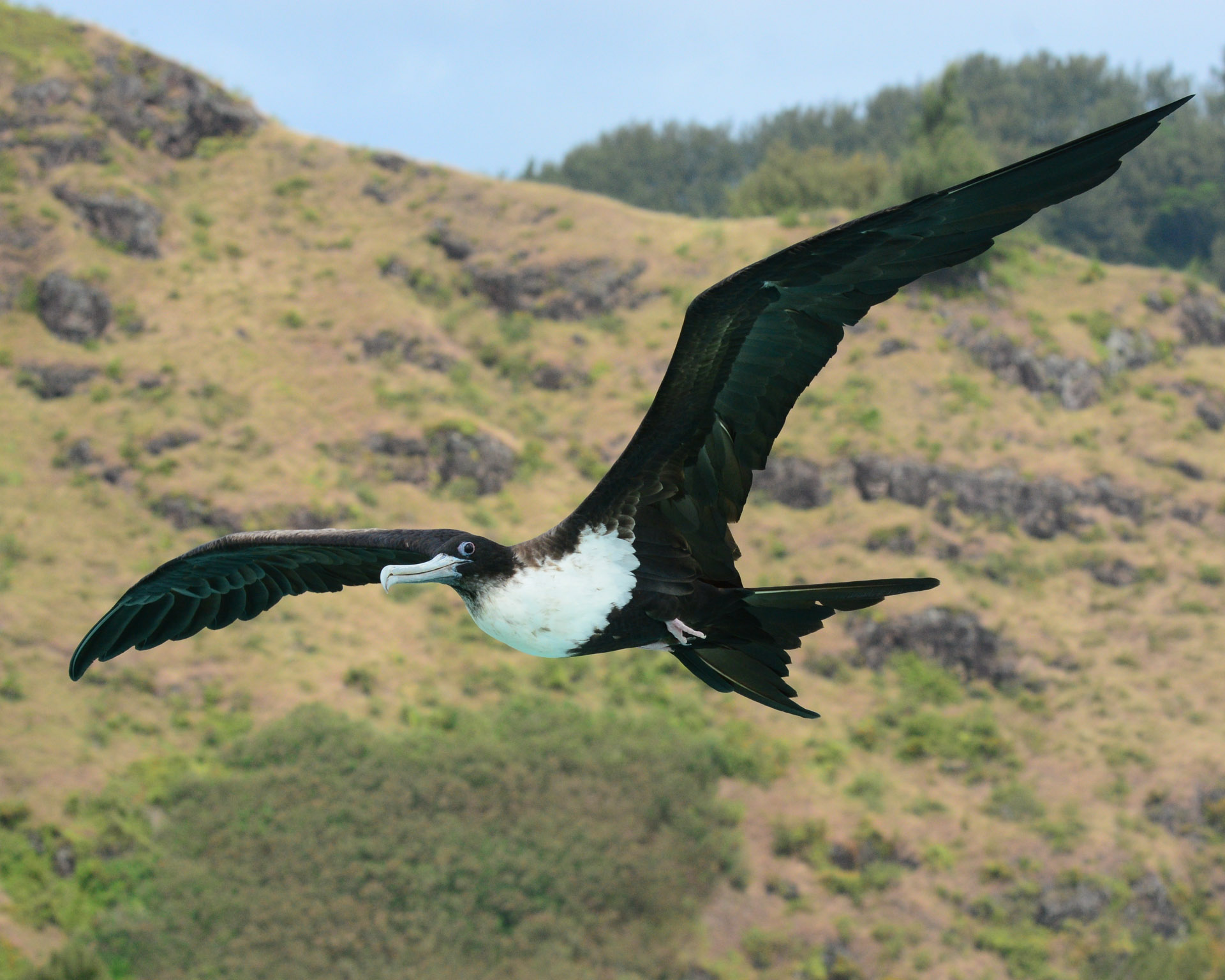
Pacific Frigatebirds
Capable of flying for weeks without landing, frigatebirds spend most of their time hunting or stealing food from other, smaller seabirds. Great and lesser frigatebirds can also help our guides locate large pelagic marine species such as billfish.
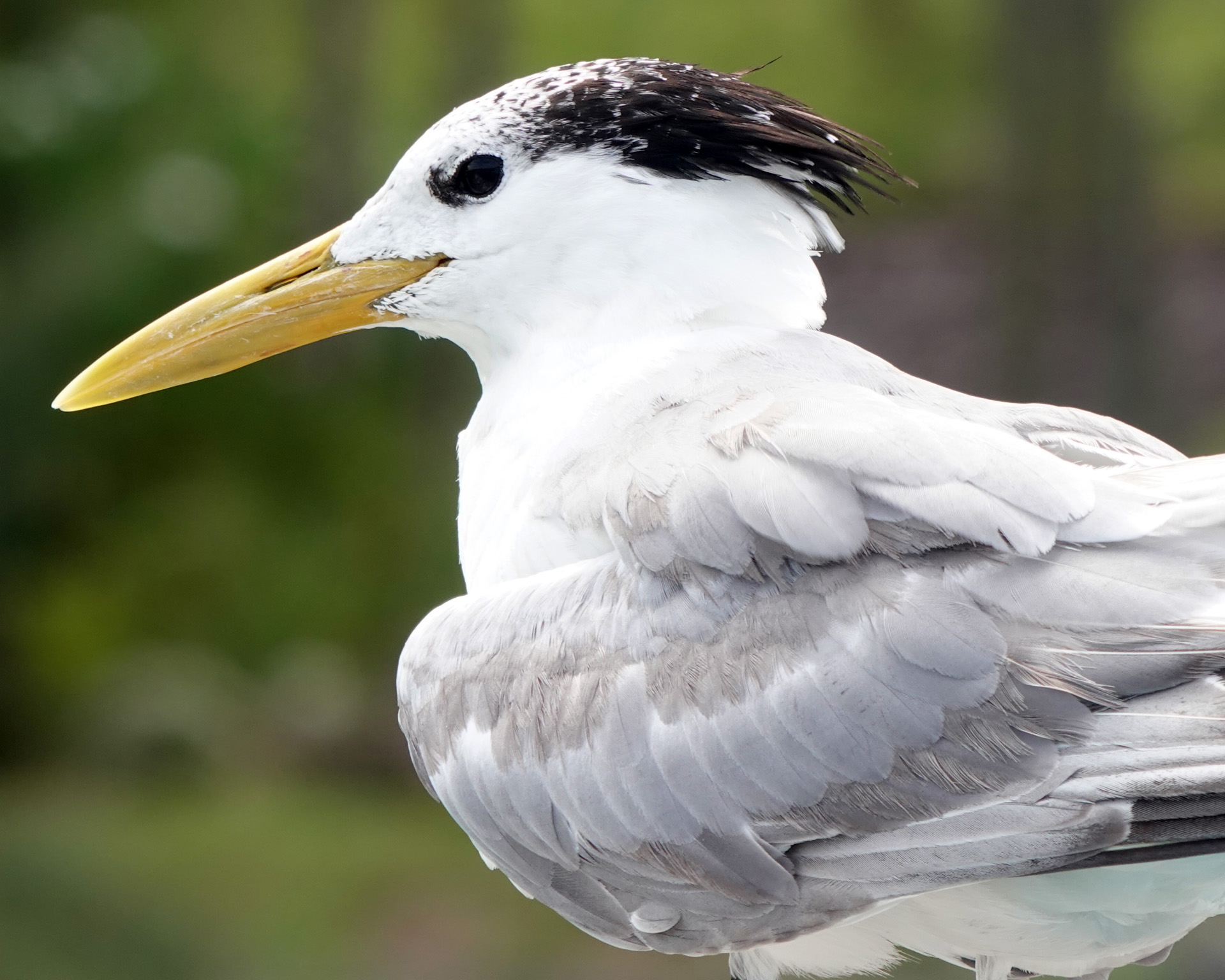
Crested Tern
Common species on Moorea, noddies and terns often come together in large groups to fish for schools of small fish offshore. Brown noddies, noisy crested terns, graceful sooty terns, and white terns are just some of the species you can observe during our tours. The white plumage of terns is easily spotted from long distances and thus attracts other birds that know food is nearby. Noddies and terns are valuable helpers for us in spotting animals.

Javanese Moray Eel
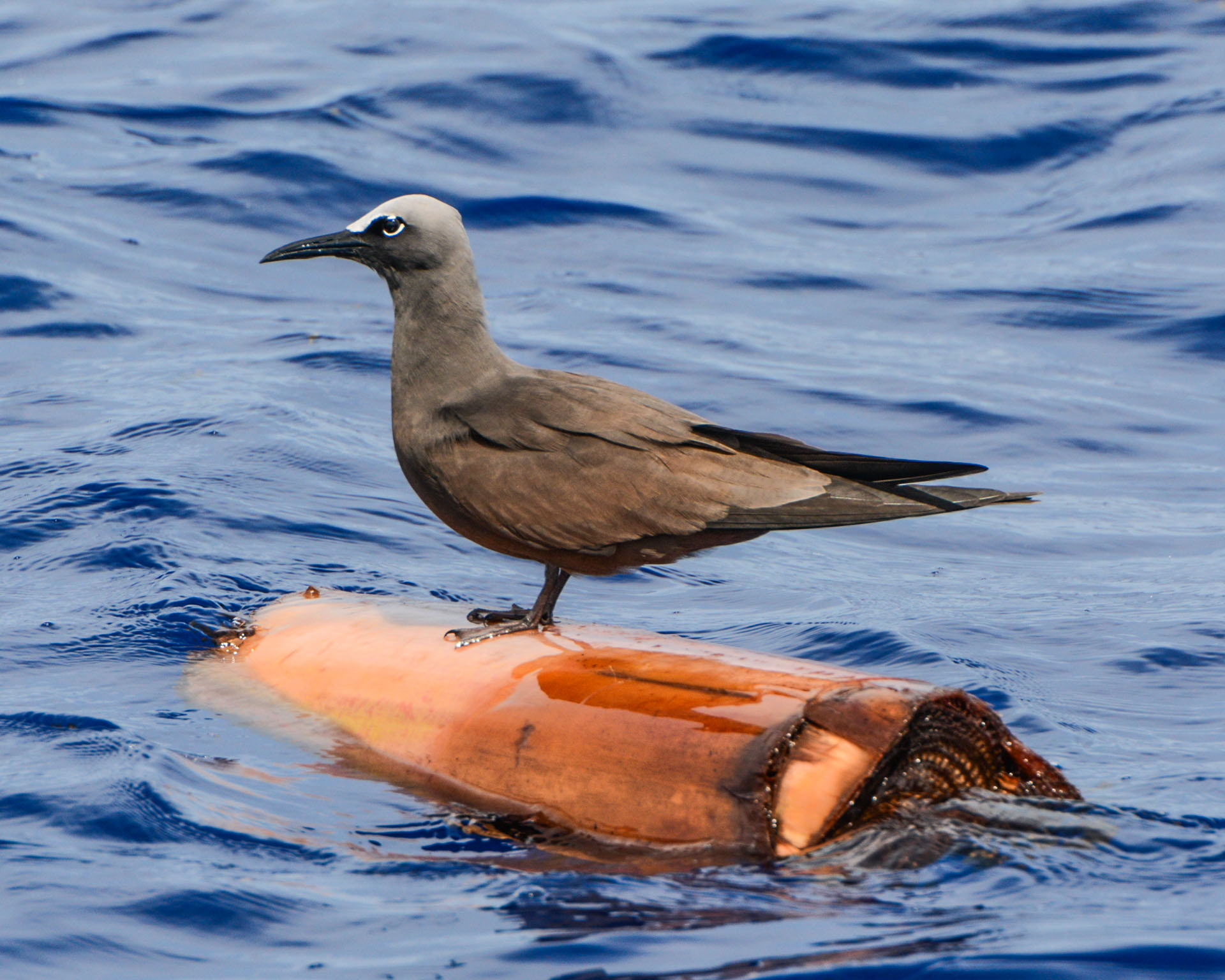
Brown Noddy
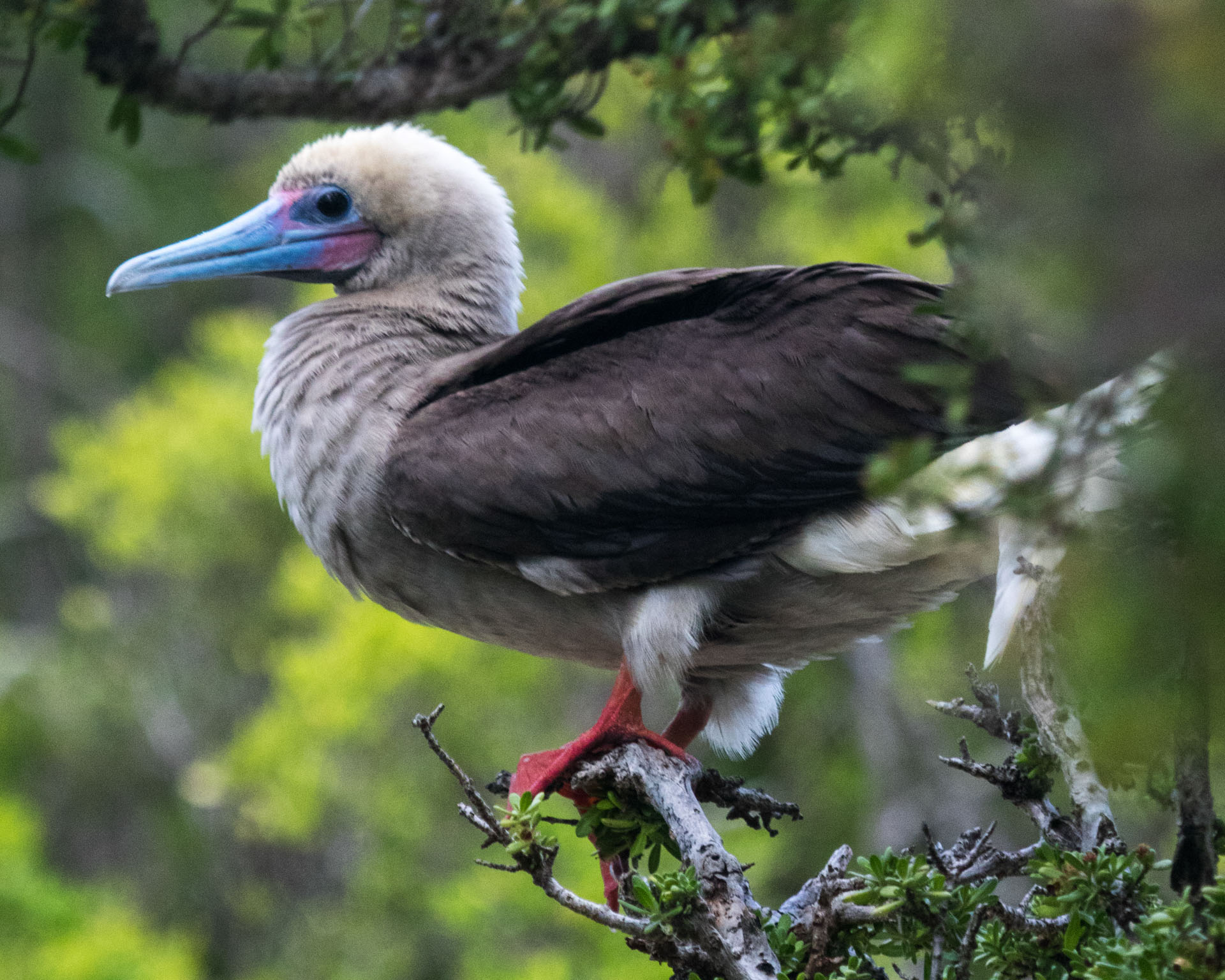
Red-footed Booby
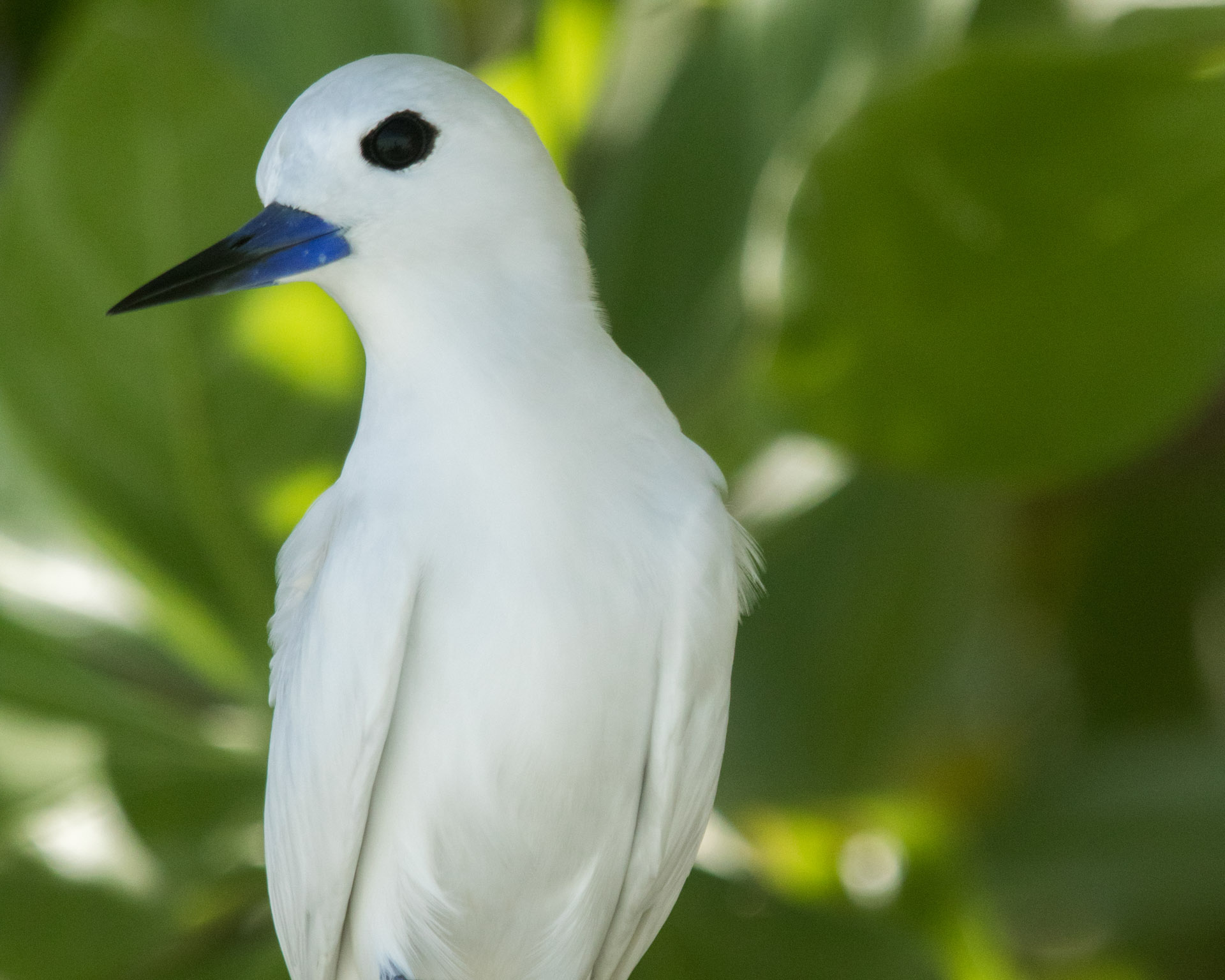
White Tern

Clownfish
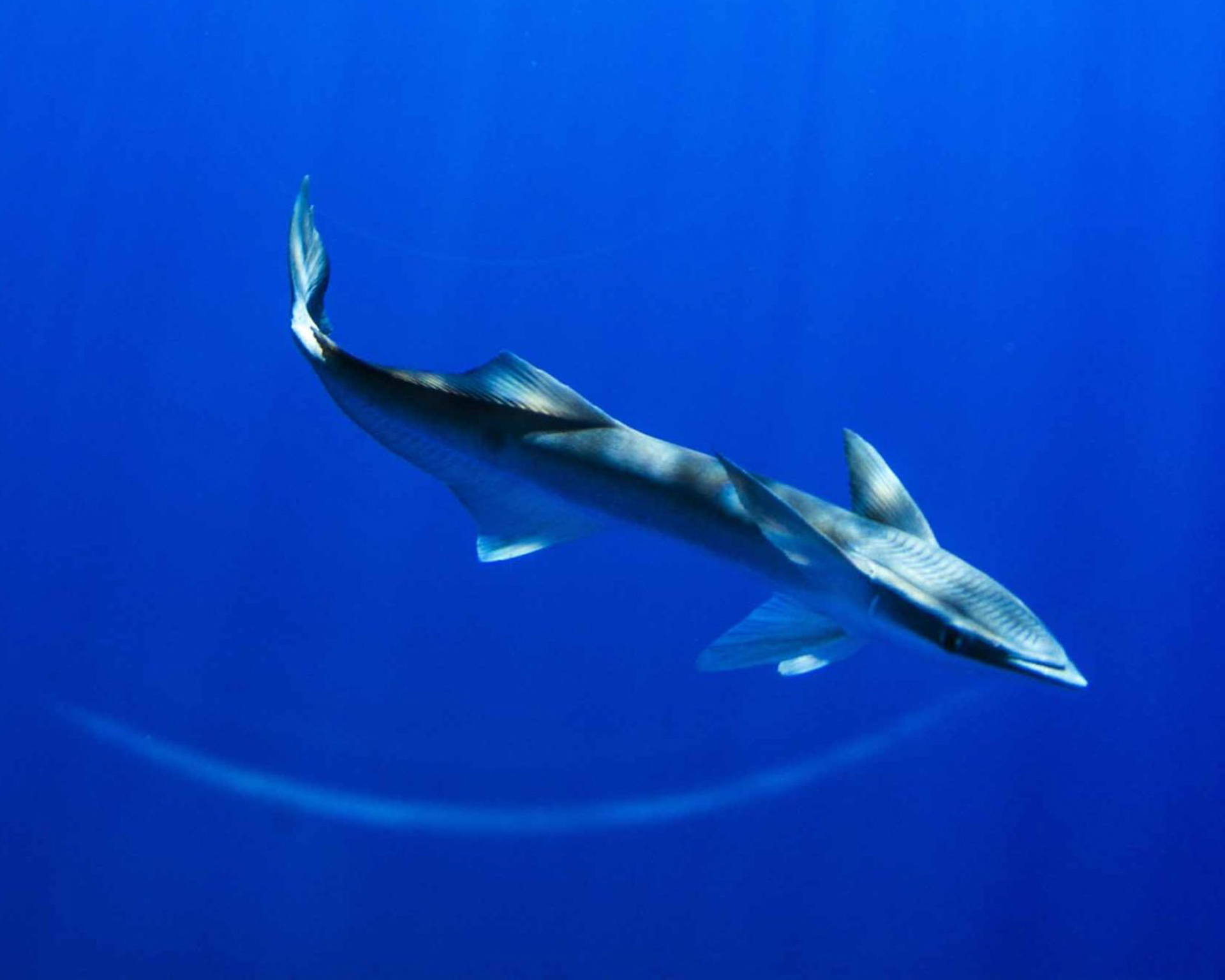
Common Remora
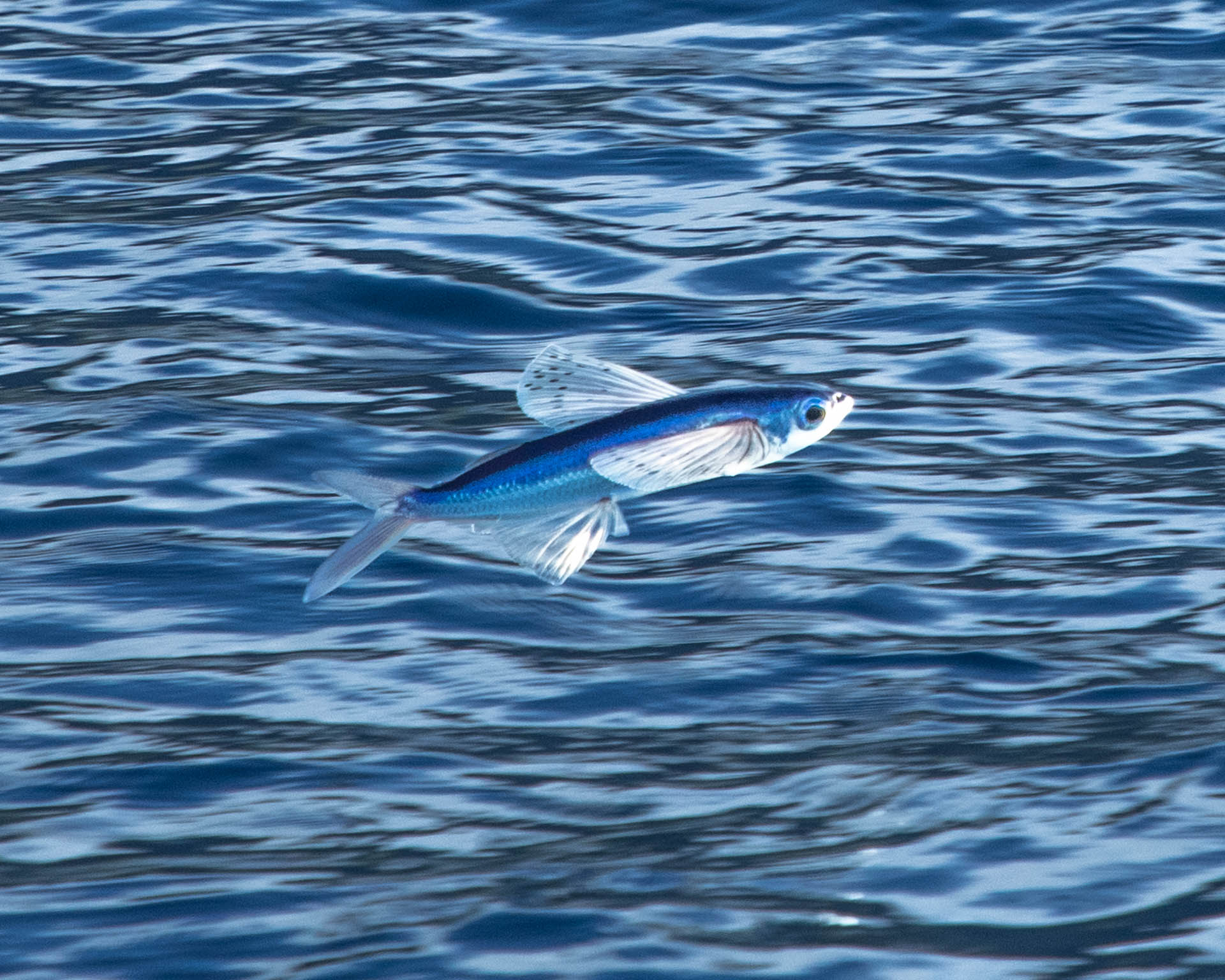
Flying Fish
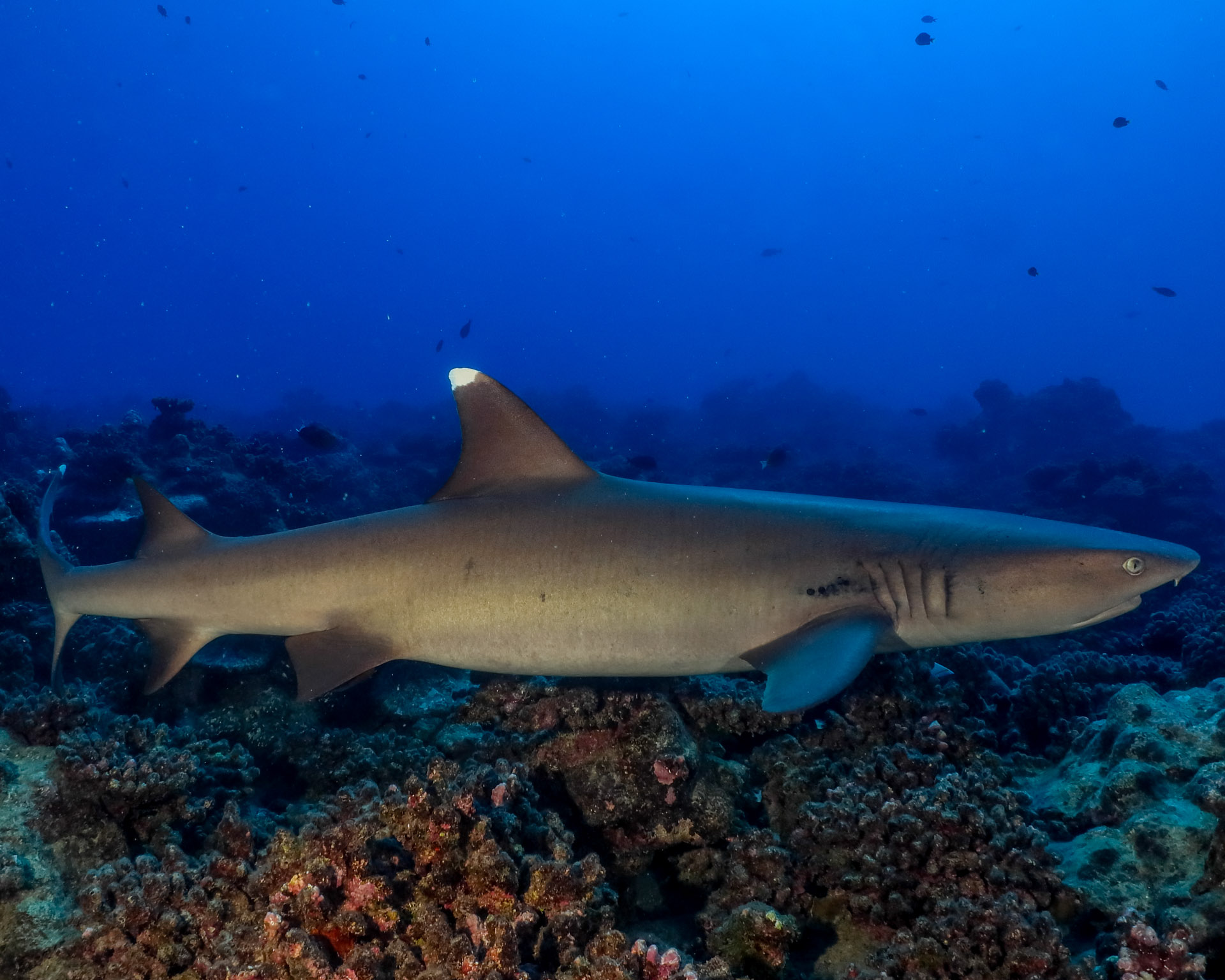
Whitetip reef shark
The whitetip reef shark is a small reef shark found primarily in the passes and on the outer slope. It can be seen patrolling the reef in search of prey or resting on the sand or sheltered by reef crevices.
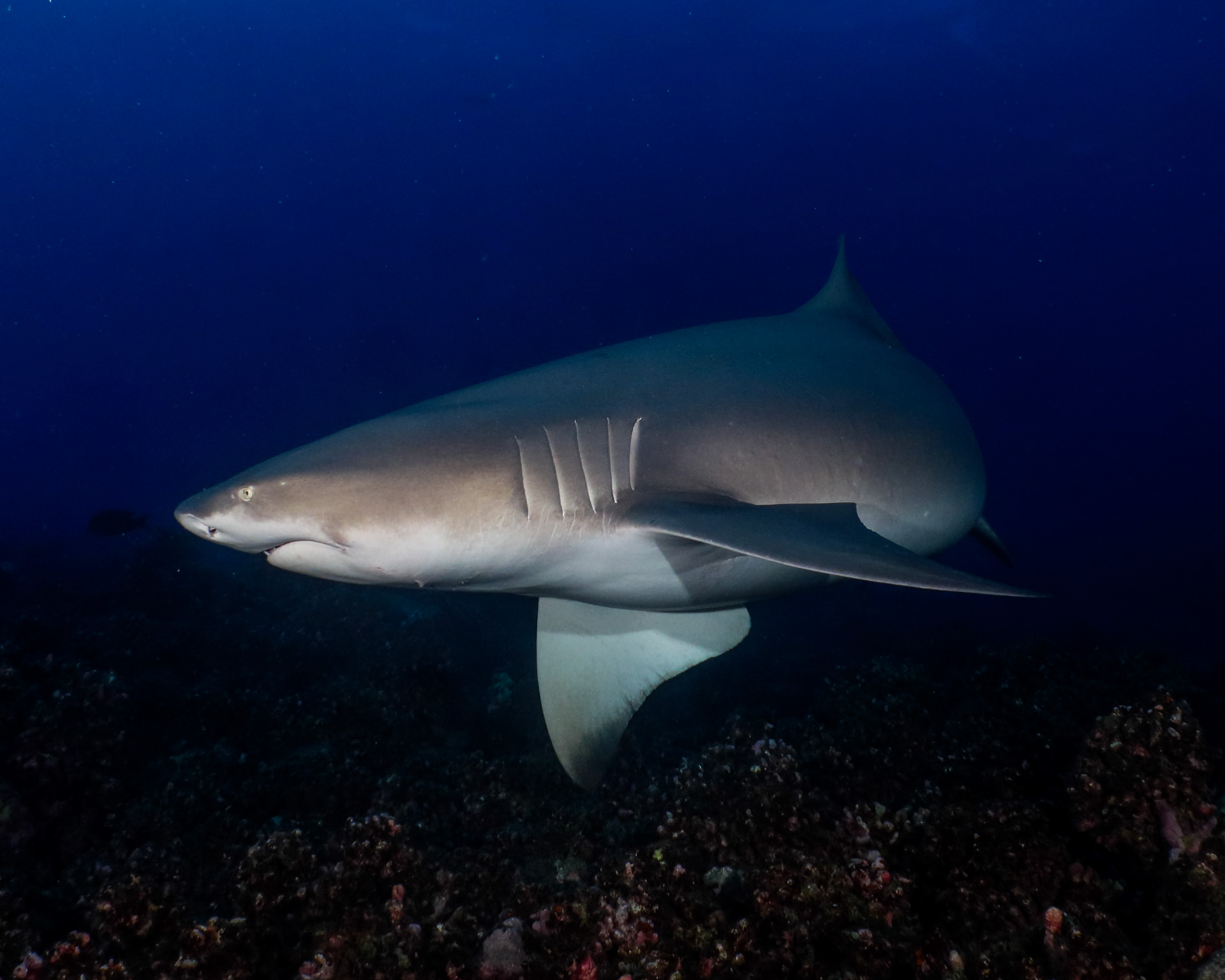
Lemon Shark
The lemon shark is an imposing and massive shark that can reach 3.4 meters in length. Its name comes from its yellowish to brown color, which is found mainly in juveniles but also in adults. Relatively common on the reefs of Moorea, it is a benthic shark (one that lives and feeds near the bottom) and has developed a complex social life.
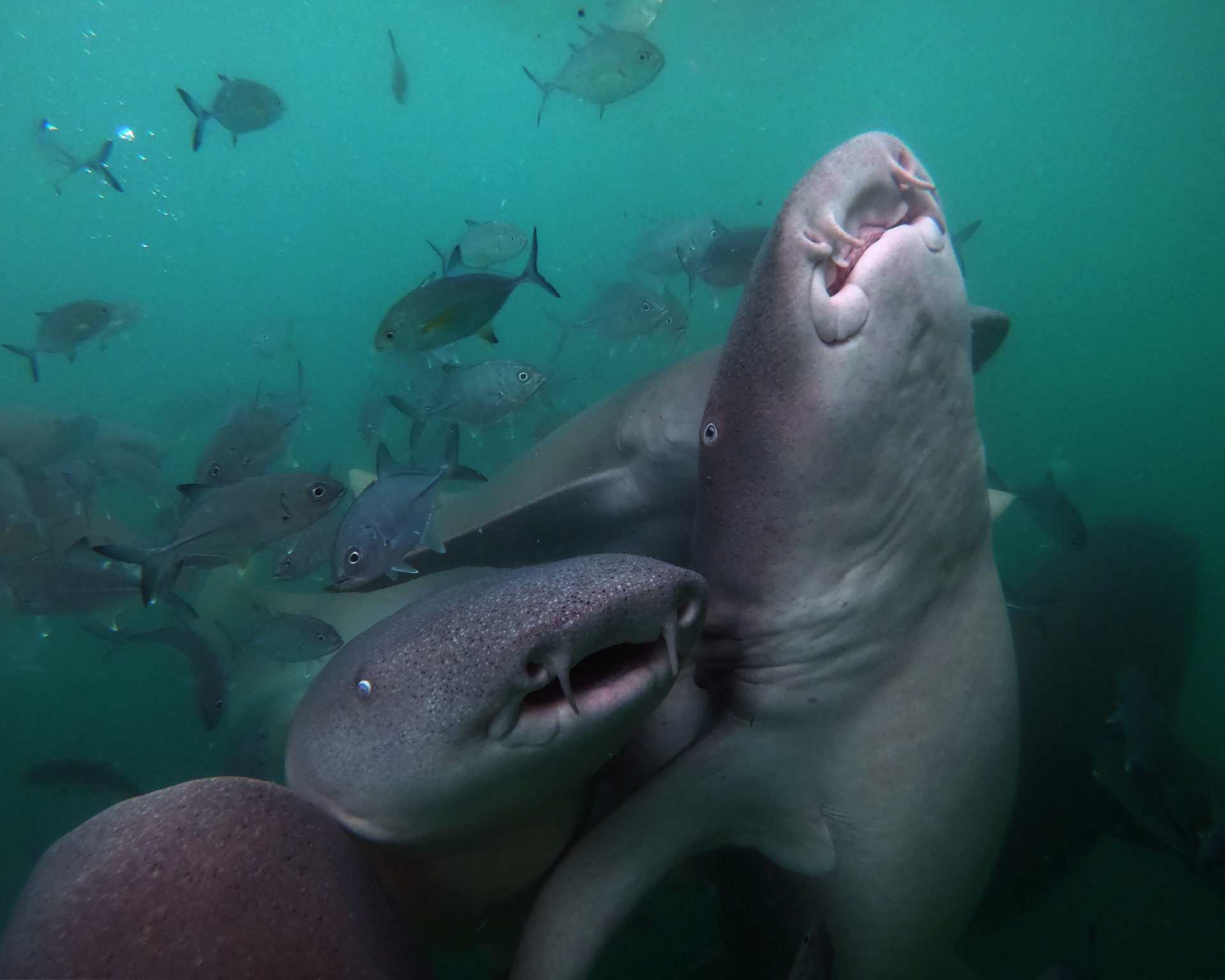
Nurse Shark
Almost blind, this shark has an excellent sense of smell. Often measuring over three meters, it is a regular inhabitant of Moorea's bays and lagoon, where it sleeps in underwater caves. Its clumsy gait has earned it the nickname "sea cow," but doesn't prevent it from being efficient at finding its prey, which it sucks in more than it bites.
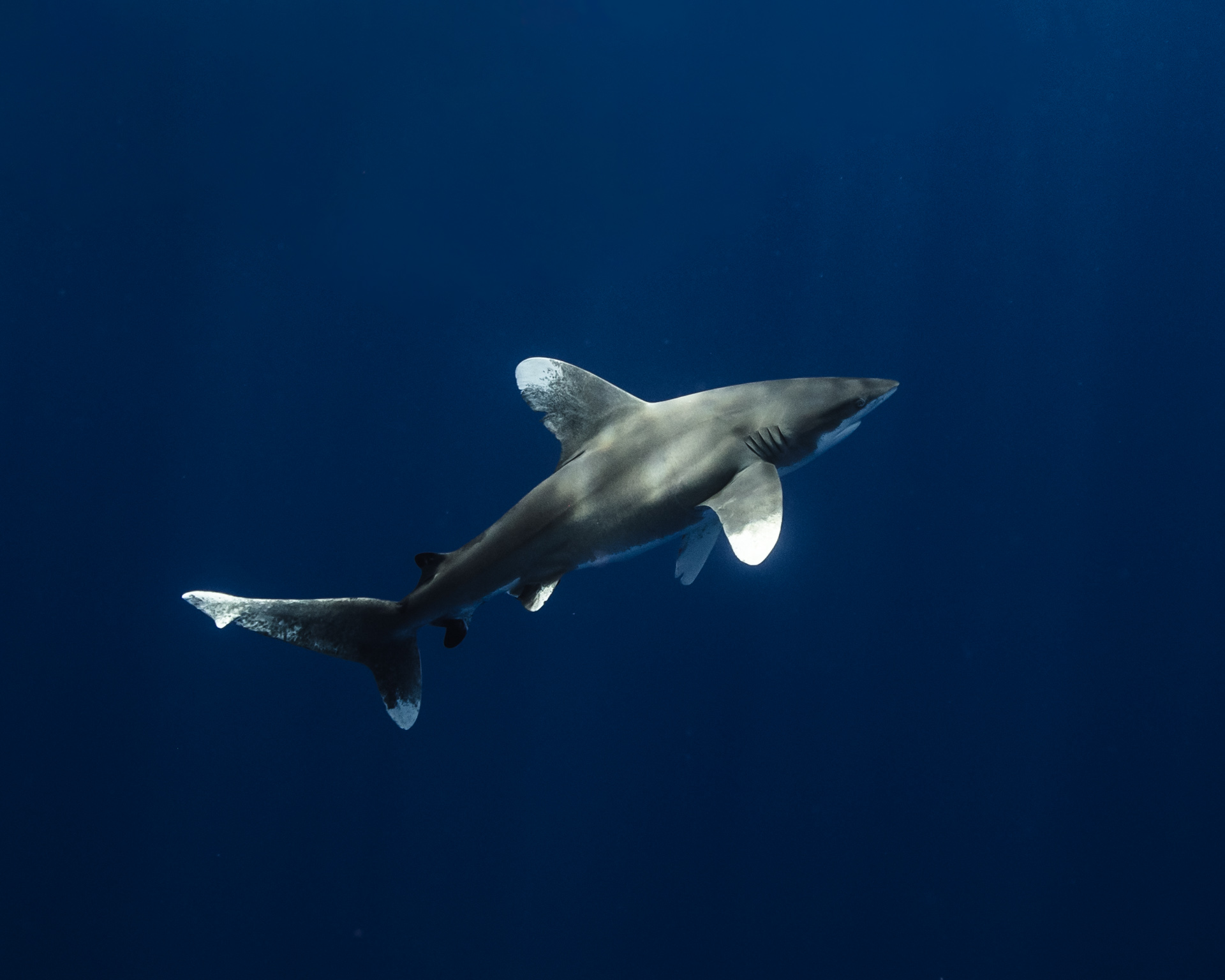
Oceanic Whitetip Shark
This pelagic shark has no natural predators and therefore fearlessly displays itself toward any species it encounters, including humans. Swimming with this species is, however, possible if strict safety rules are followed. It is often found accompanying groups of cetaceans such as pilot whales.
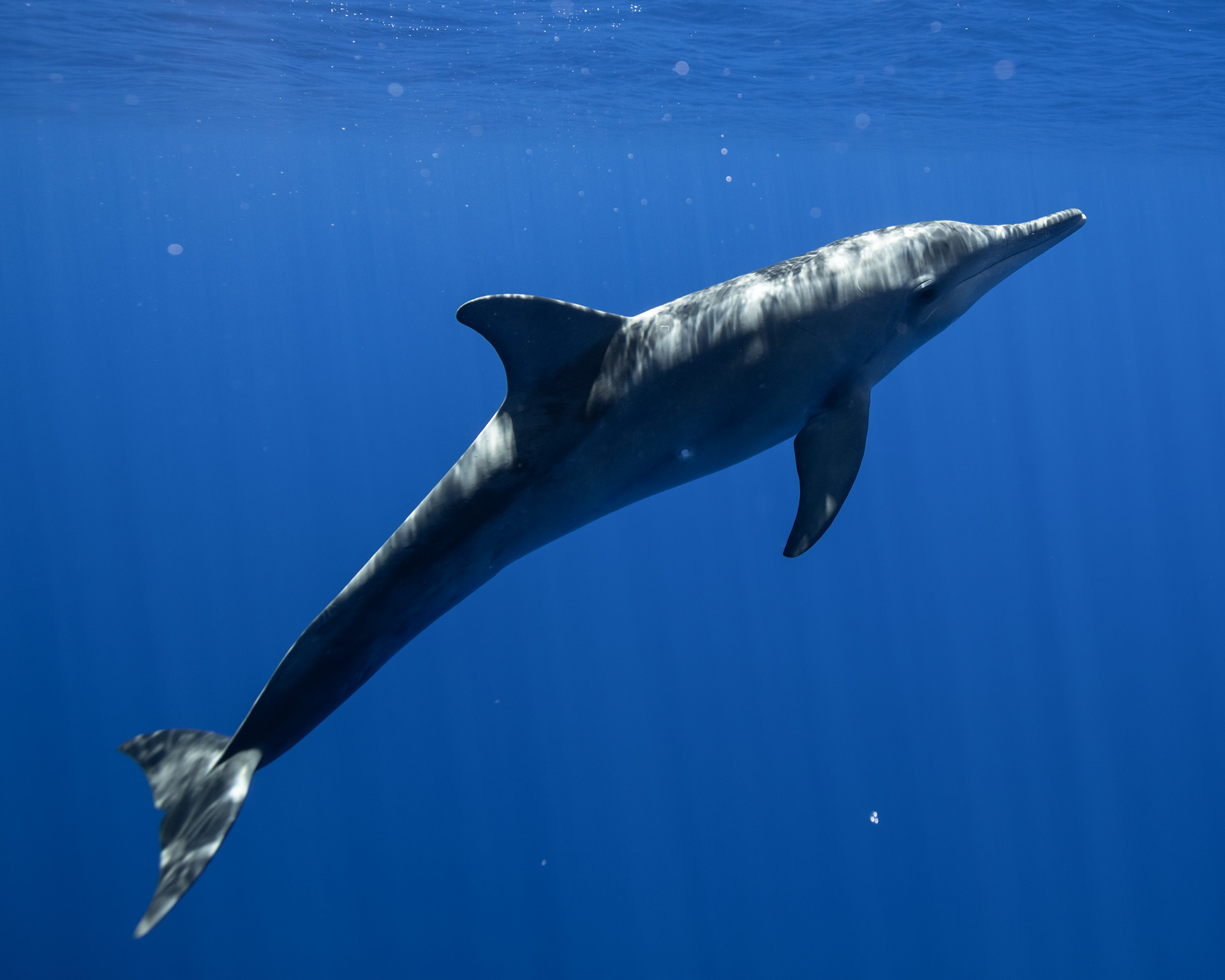
Rough-toothed Dolphin
This dolphin species is found off the coast of Moorea year-round. The rough-toothed dolphin is a medium-sized dolphin, well-known to fishermen, whom they often approach to steal bait and fish from fishing lines. These animals are quite easy to approach in the water if swimmers are patient and take their time. Most often found in groups of fewer than 20 individuals, they are the most frequently observed cetacean species in the open ocean around Moorea.
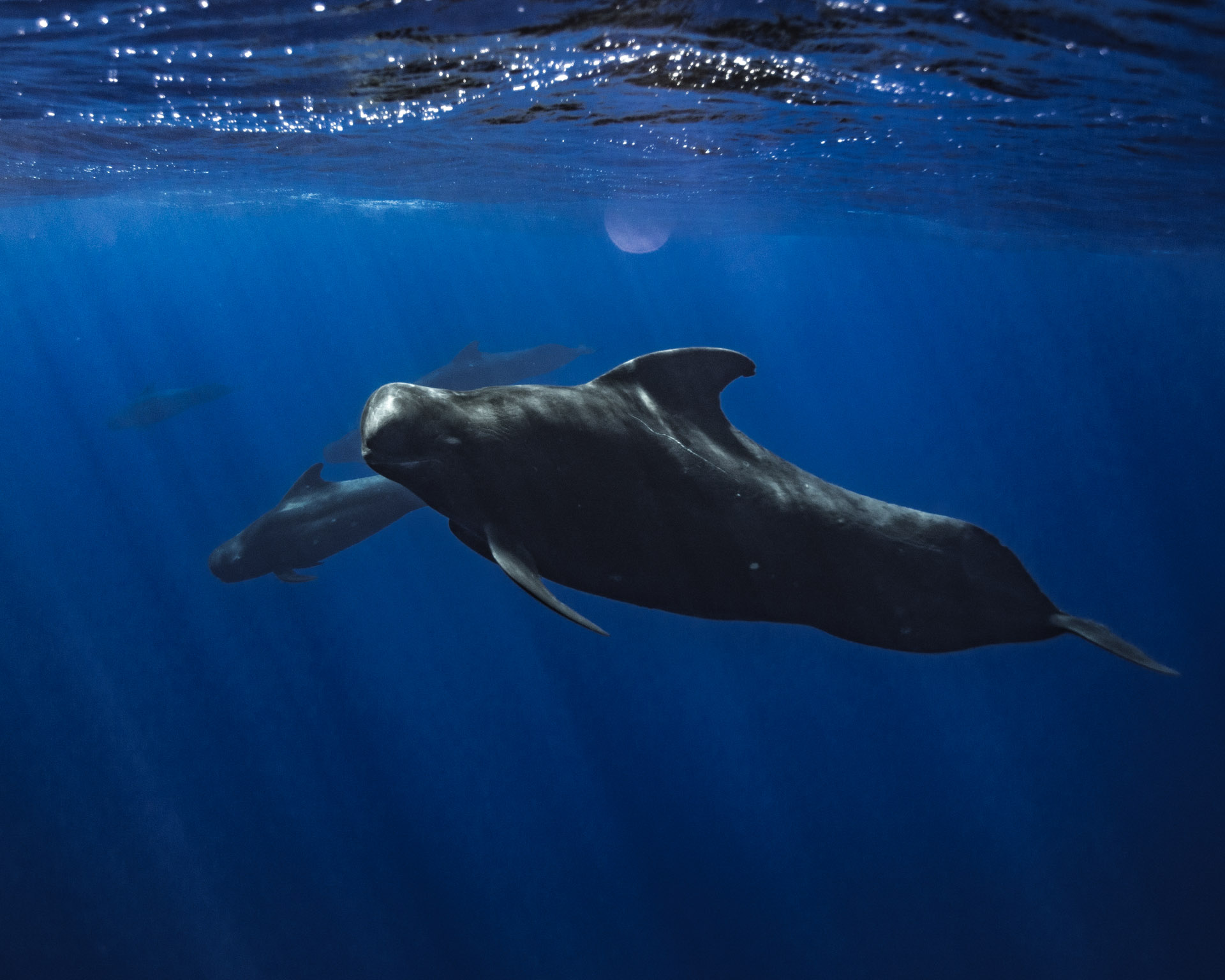
Short-finned Pilot Whale
Mistakenly nicknamed pilot whales, pilot whales belong to the dolphin family and are found offshore in large groups, often numbering over 50 individuals. These animals are all black, fast, massive, and imposing (3.5 to 7 m), but they exhibit a peaceful and curious demeanor when a group of swimmers approaches them. Swimming with pilot whales is an incredible experience, but is reserved for experienced swimmers and divers only due to the possible presence of pelagic sharks around their group.

Garden Eels
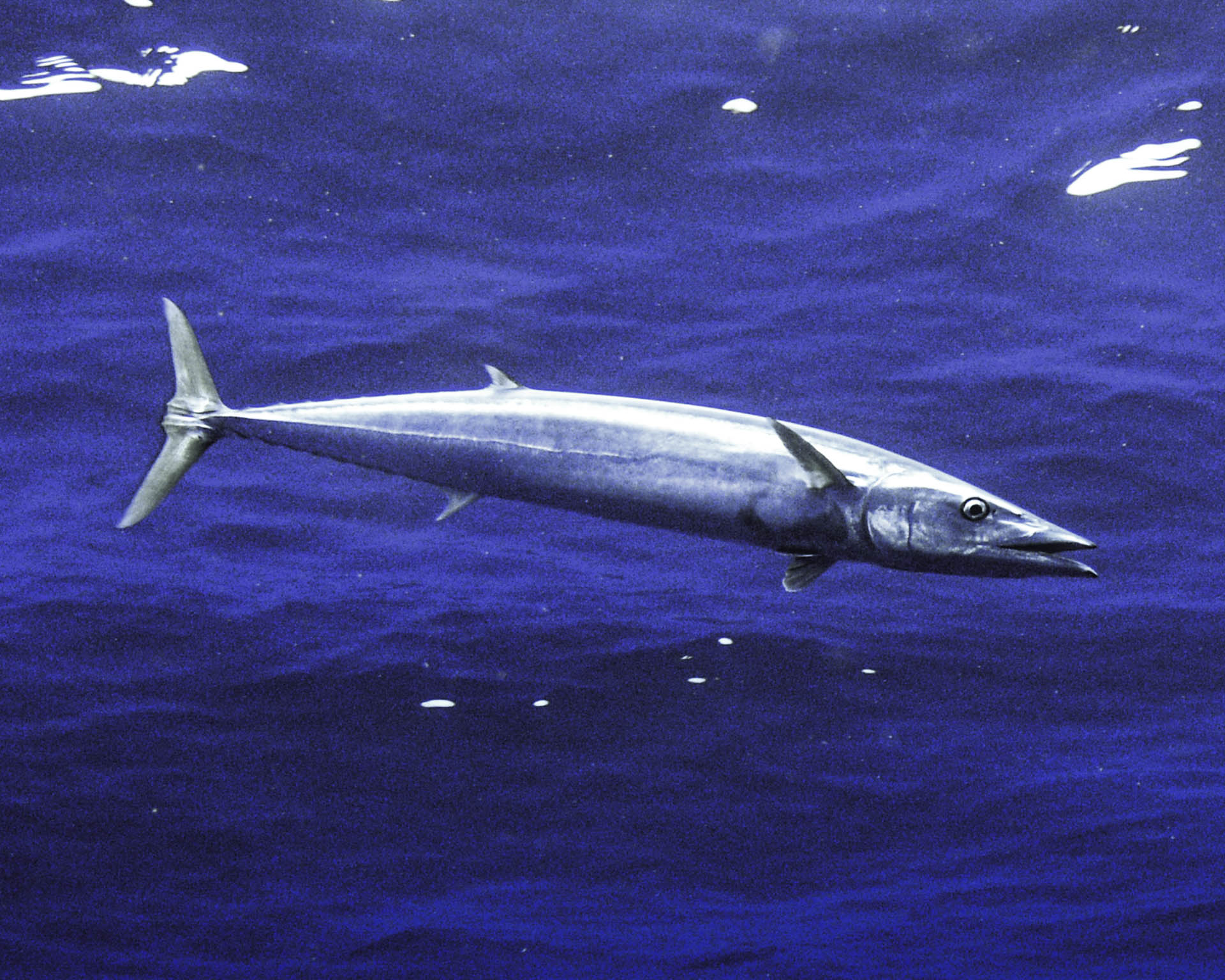
Wahoo
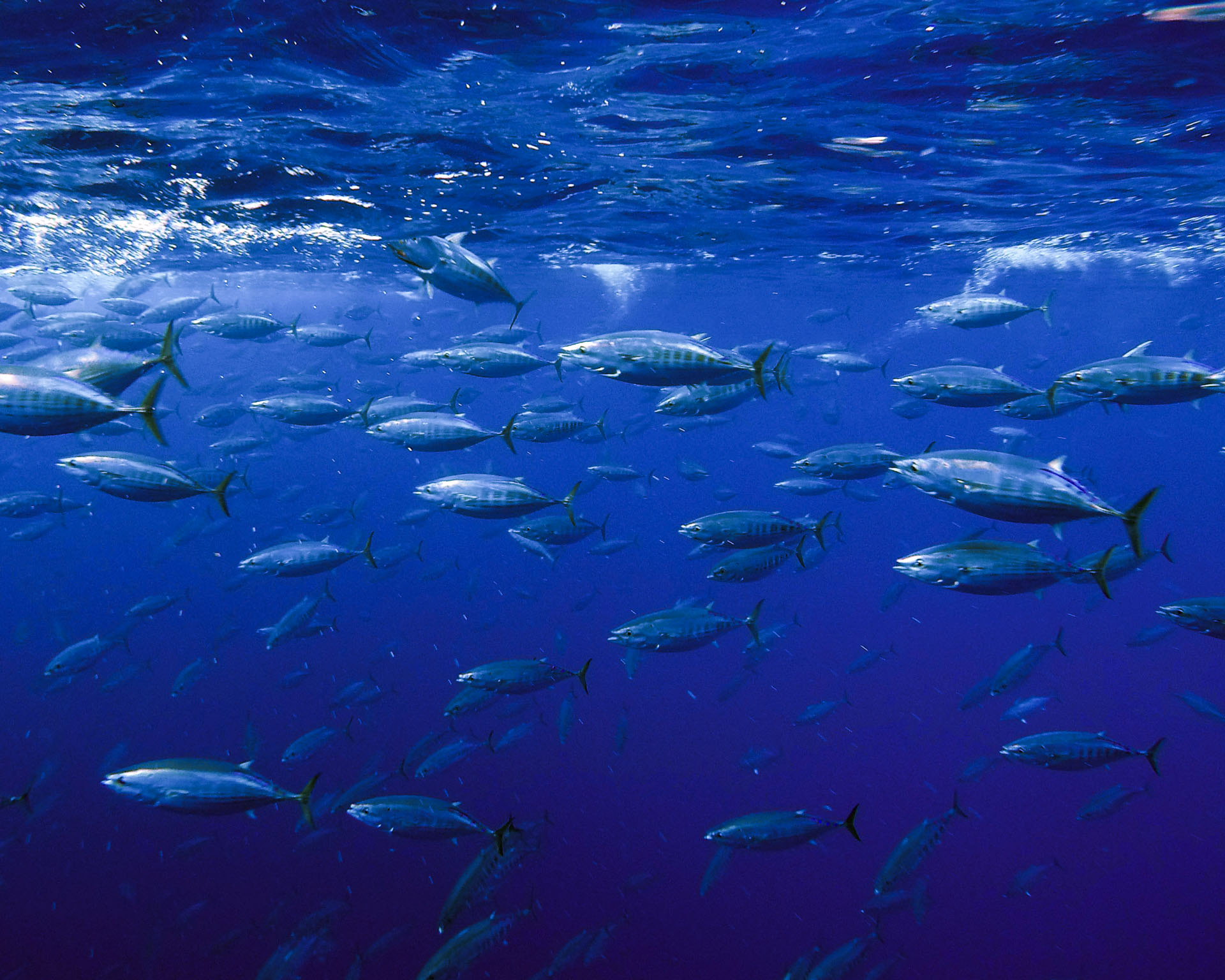
Striped bonito
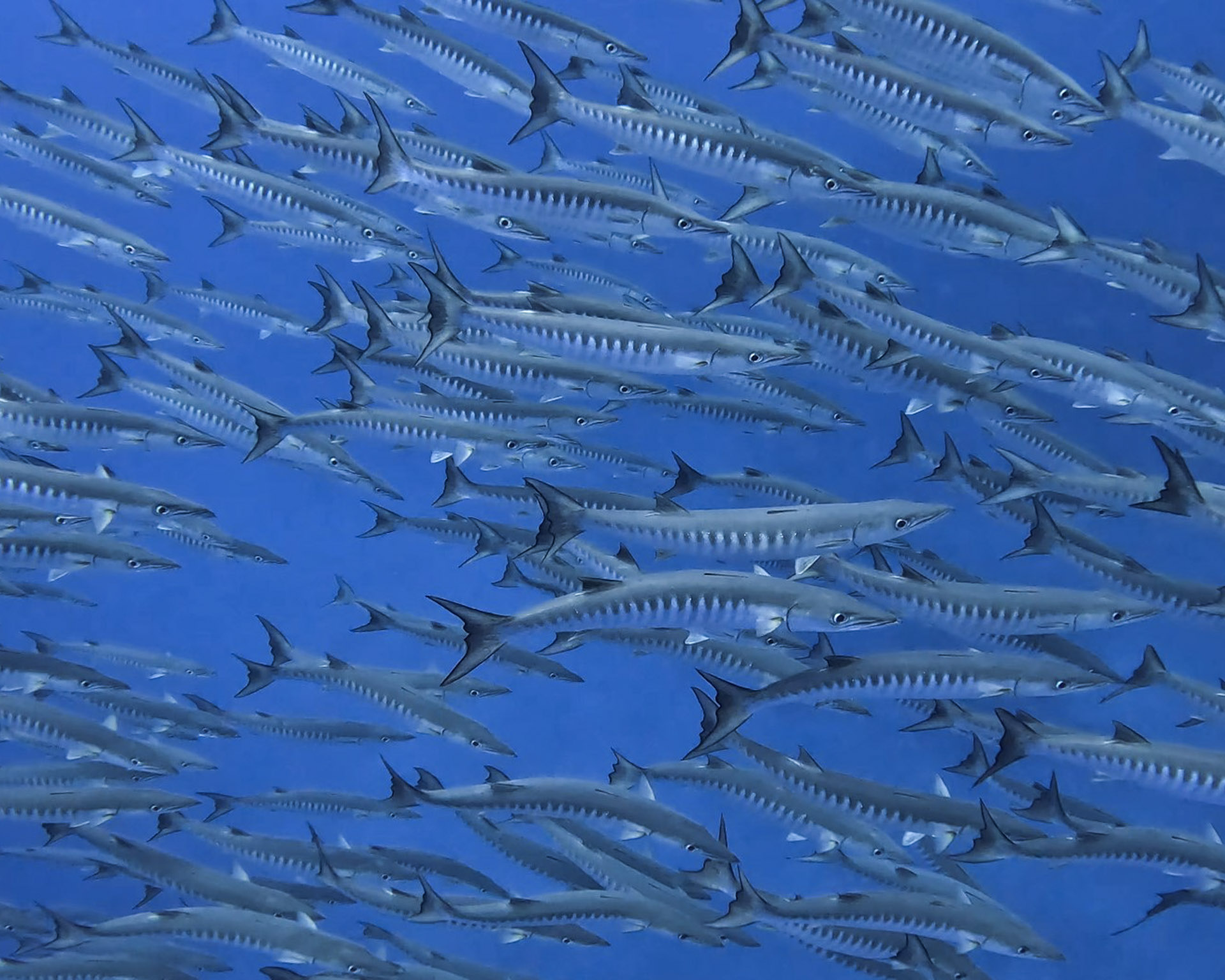
Barracuda
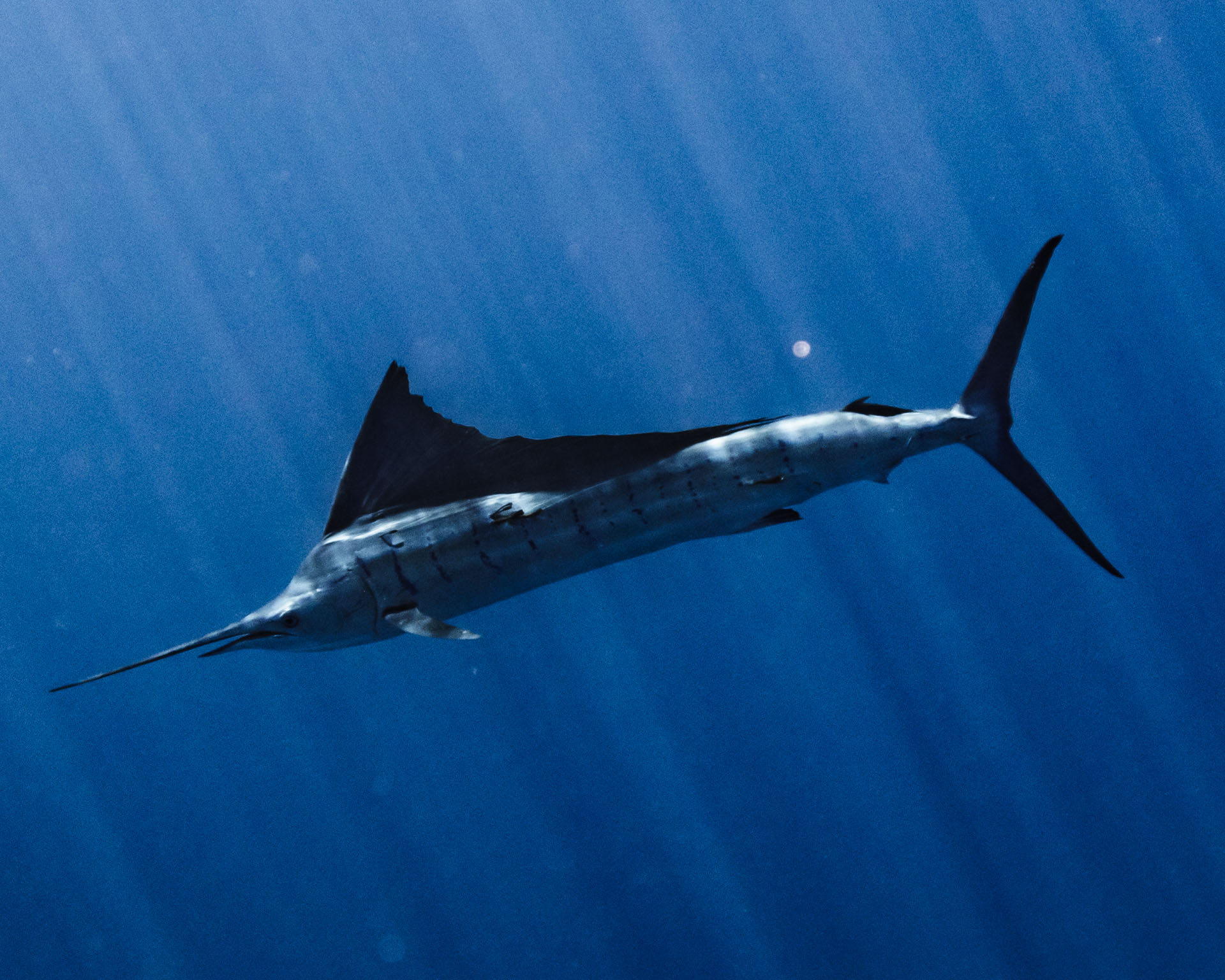
Sailfish

Diamond Squid Eggs

Frigate Storm-Petrel
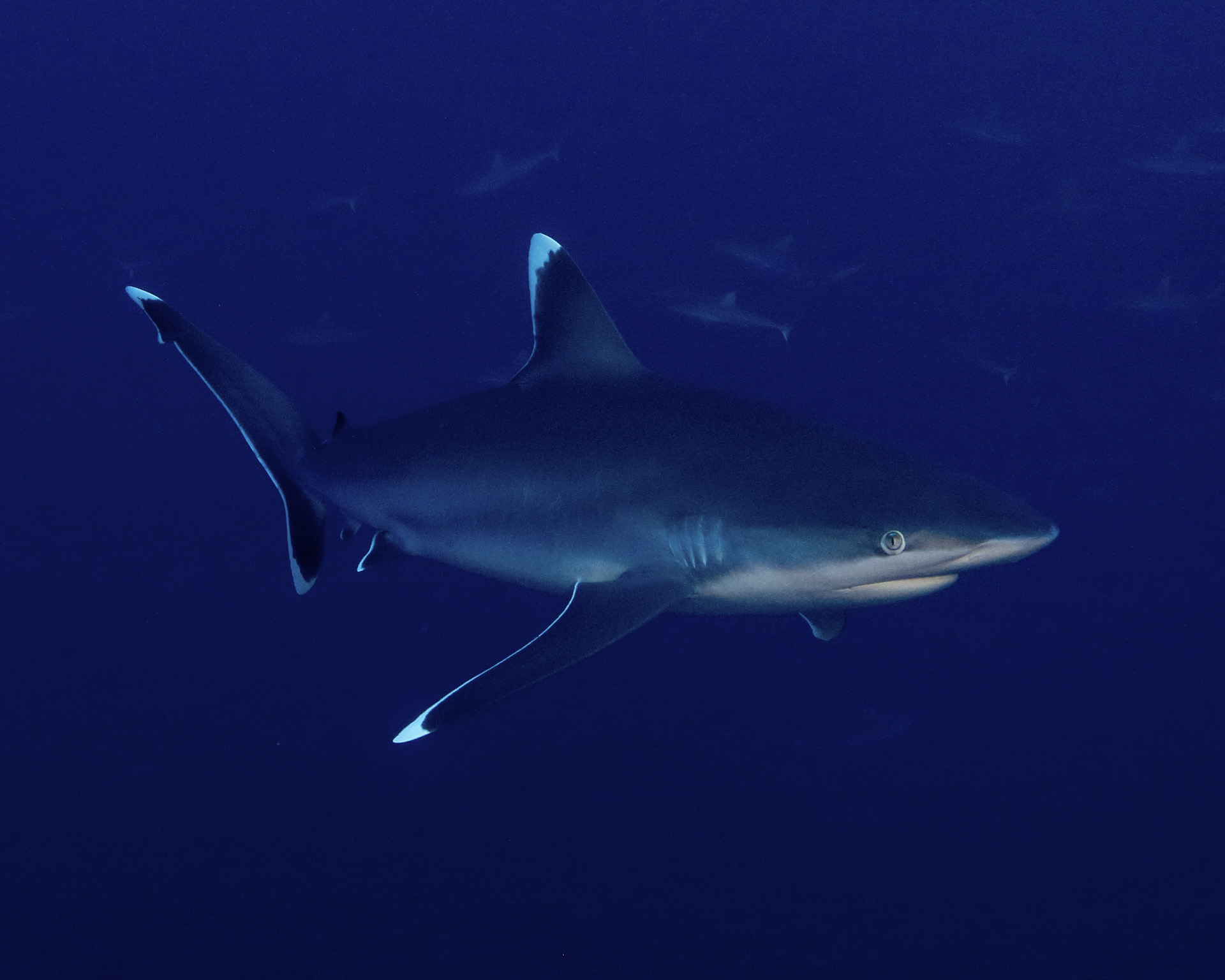
Silvertip Shark
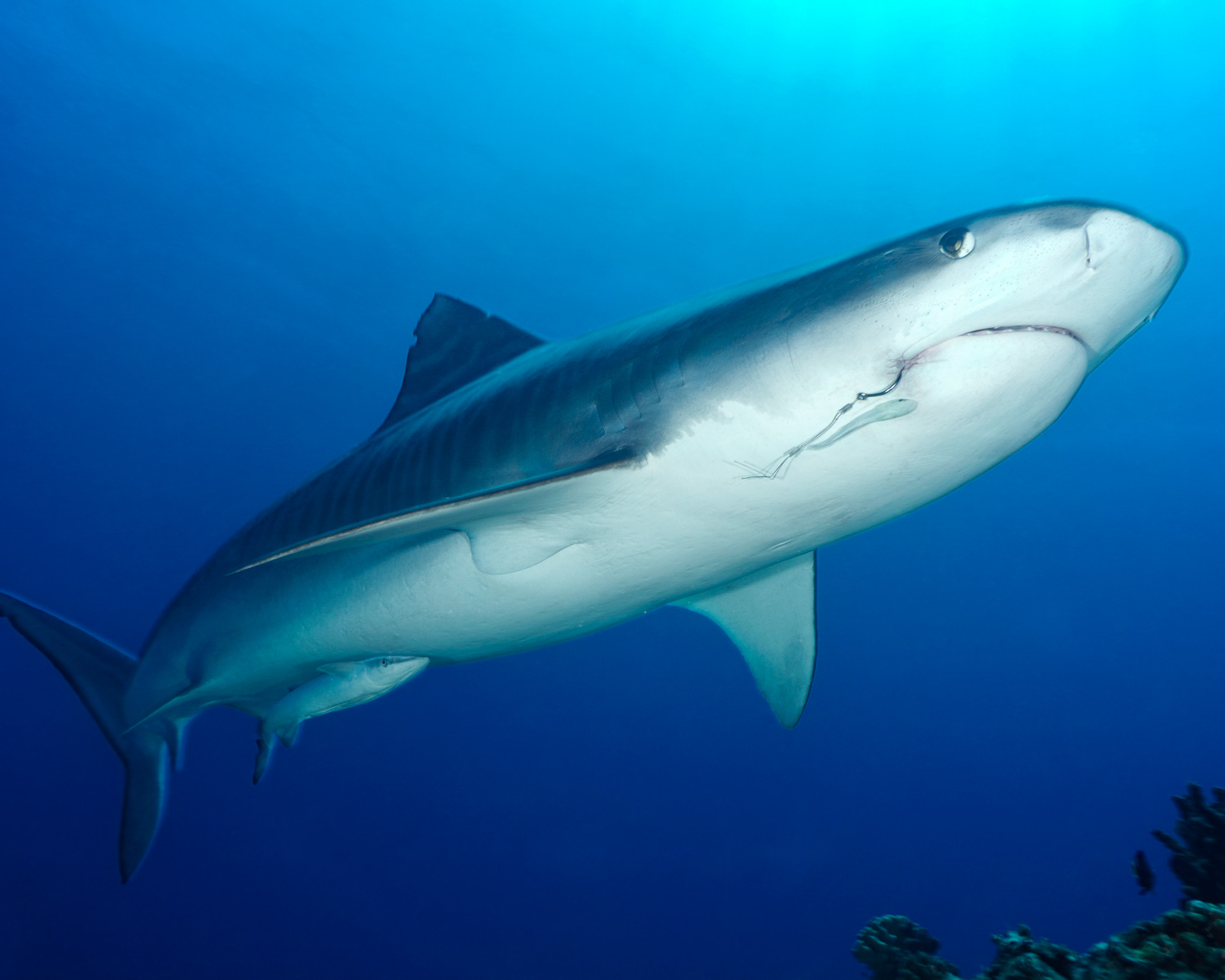
Tiger Shark
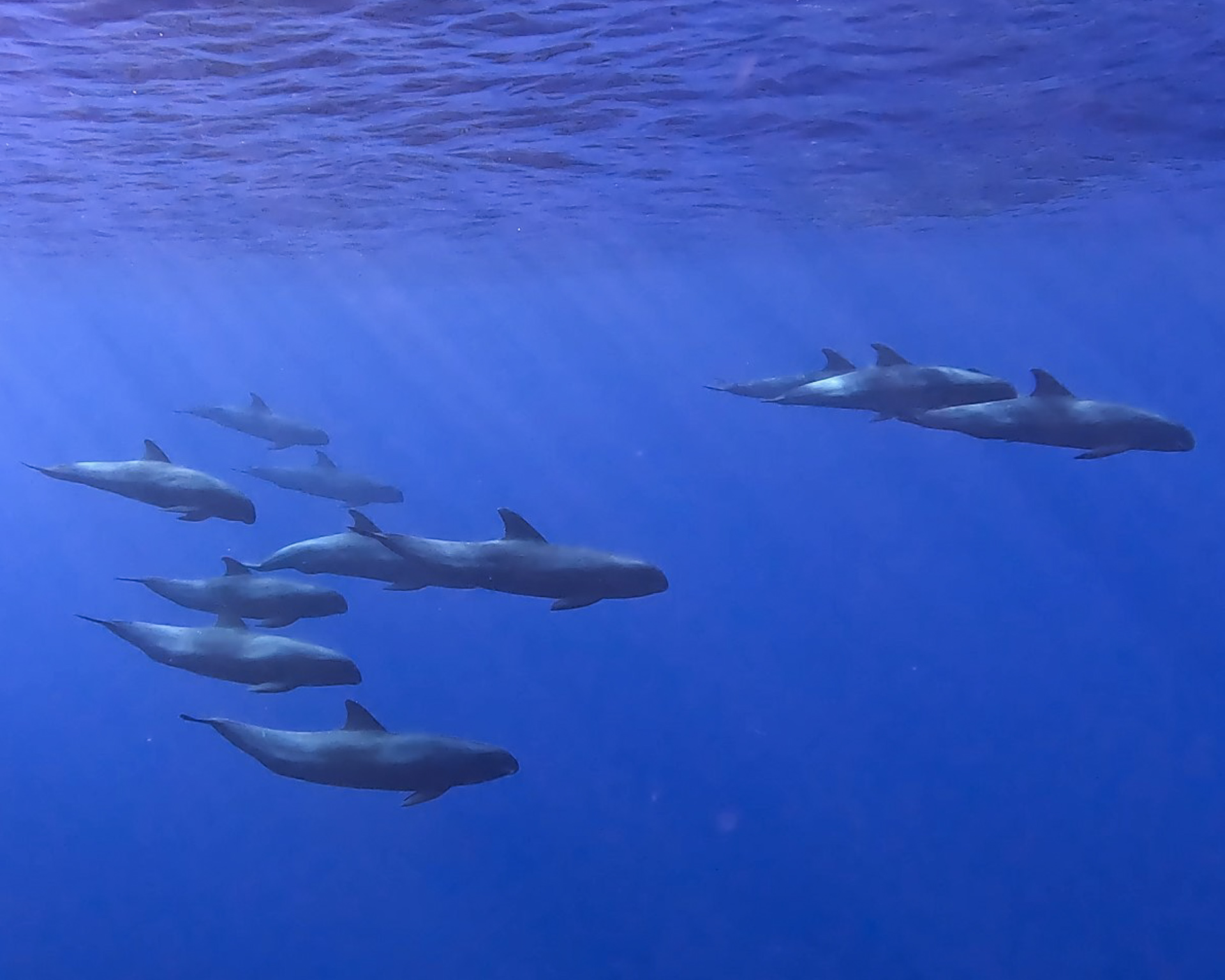
Melon headed Whale
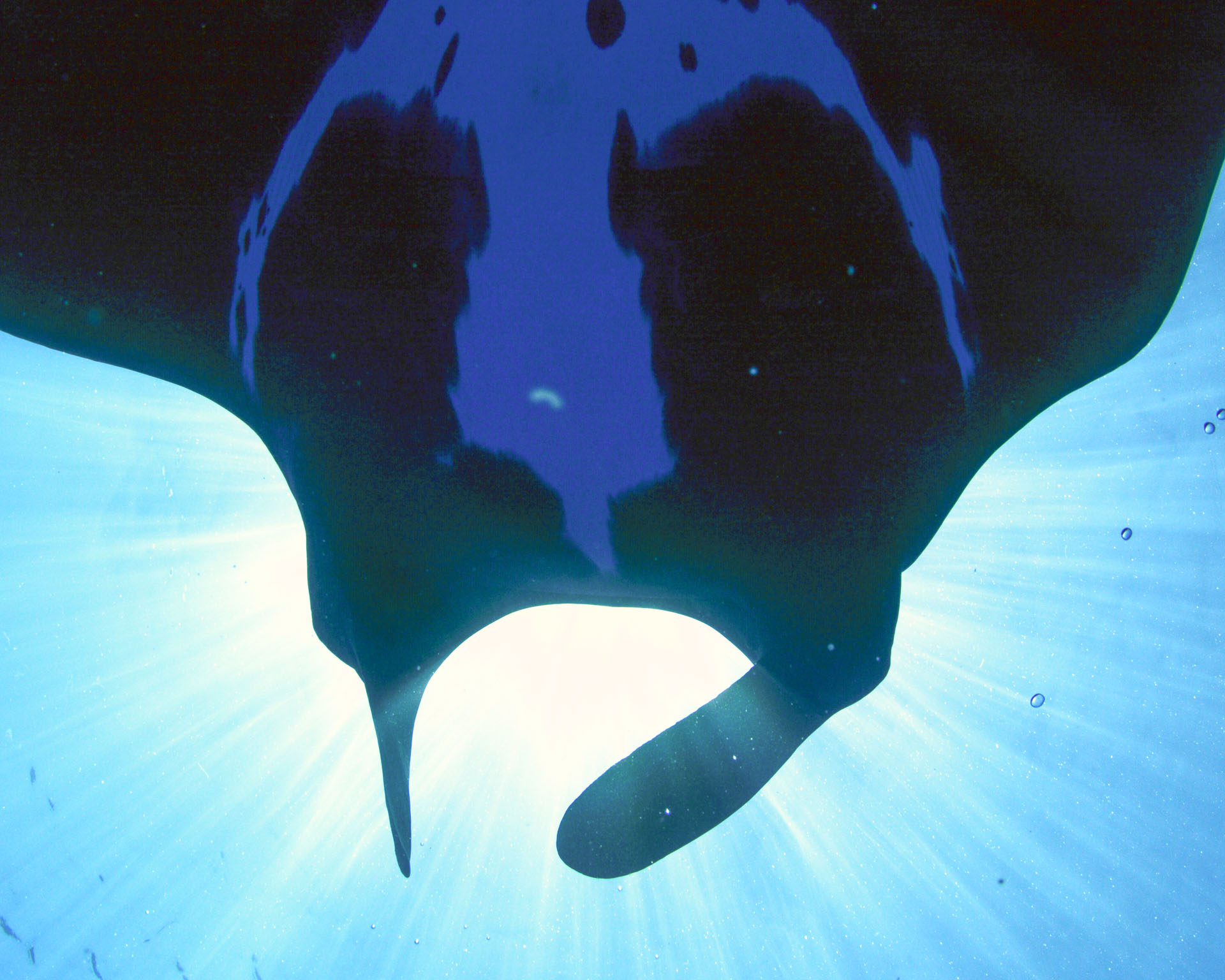
Manta Ray (Oceanic and Reef)
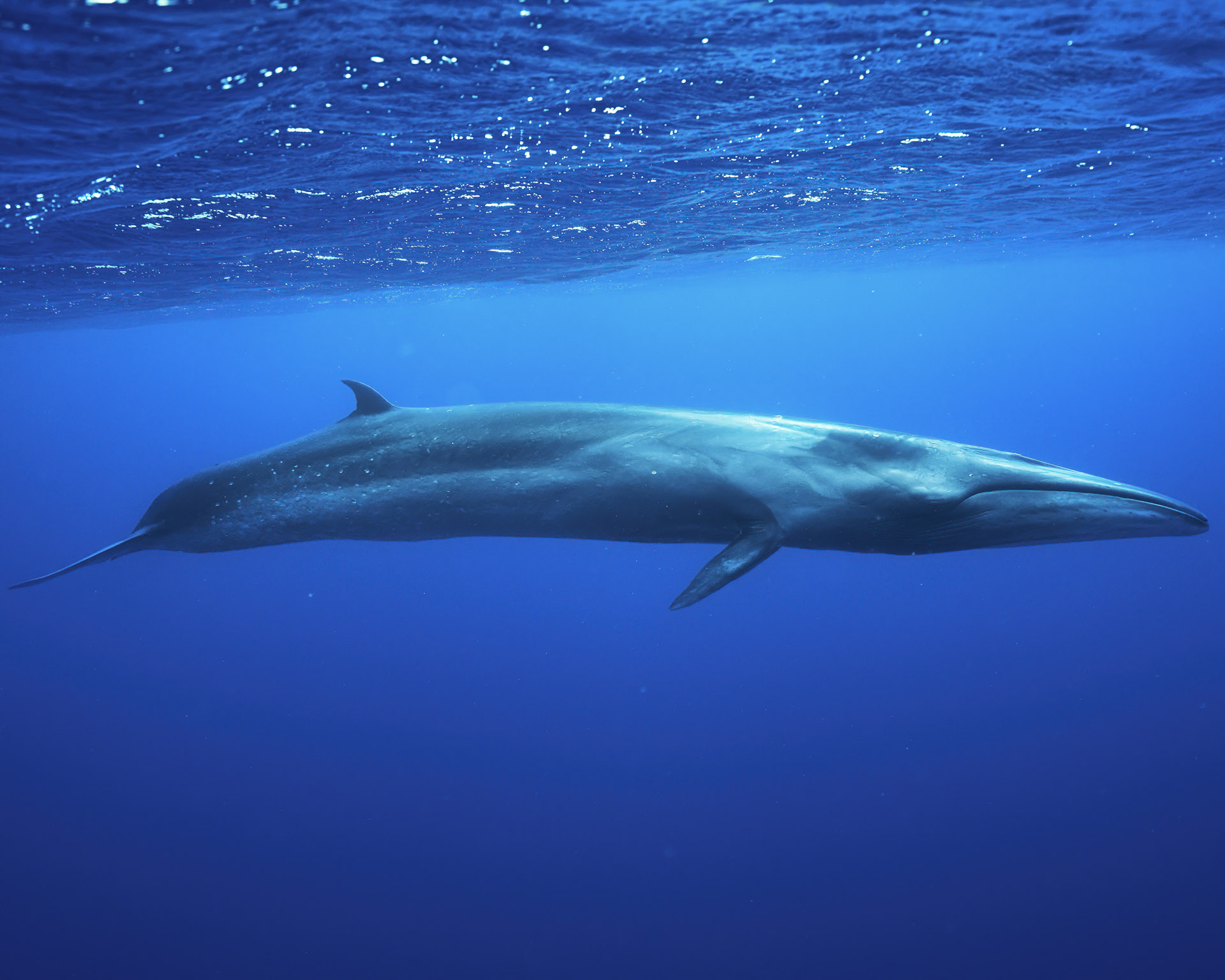
Sei Whale
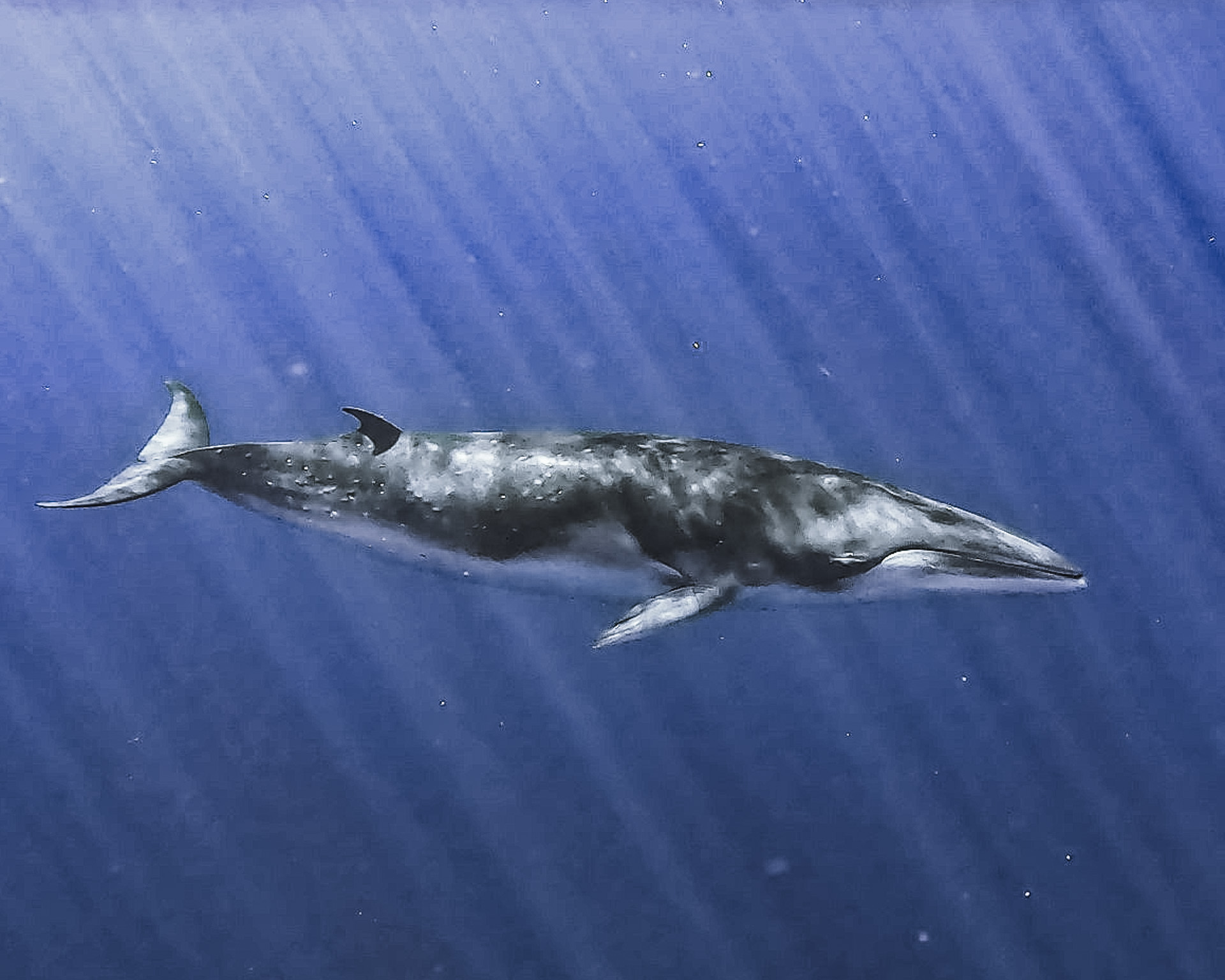
Minke Whale
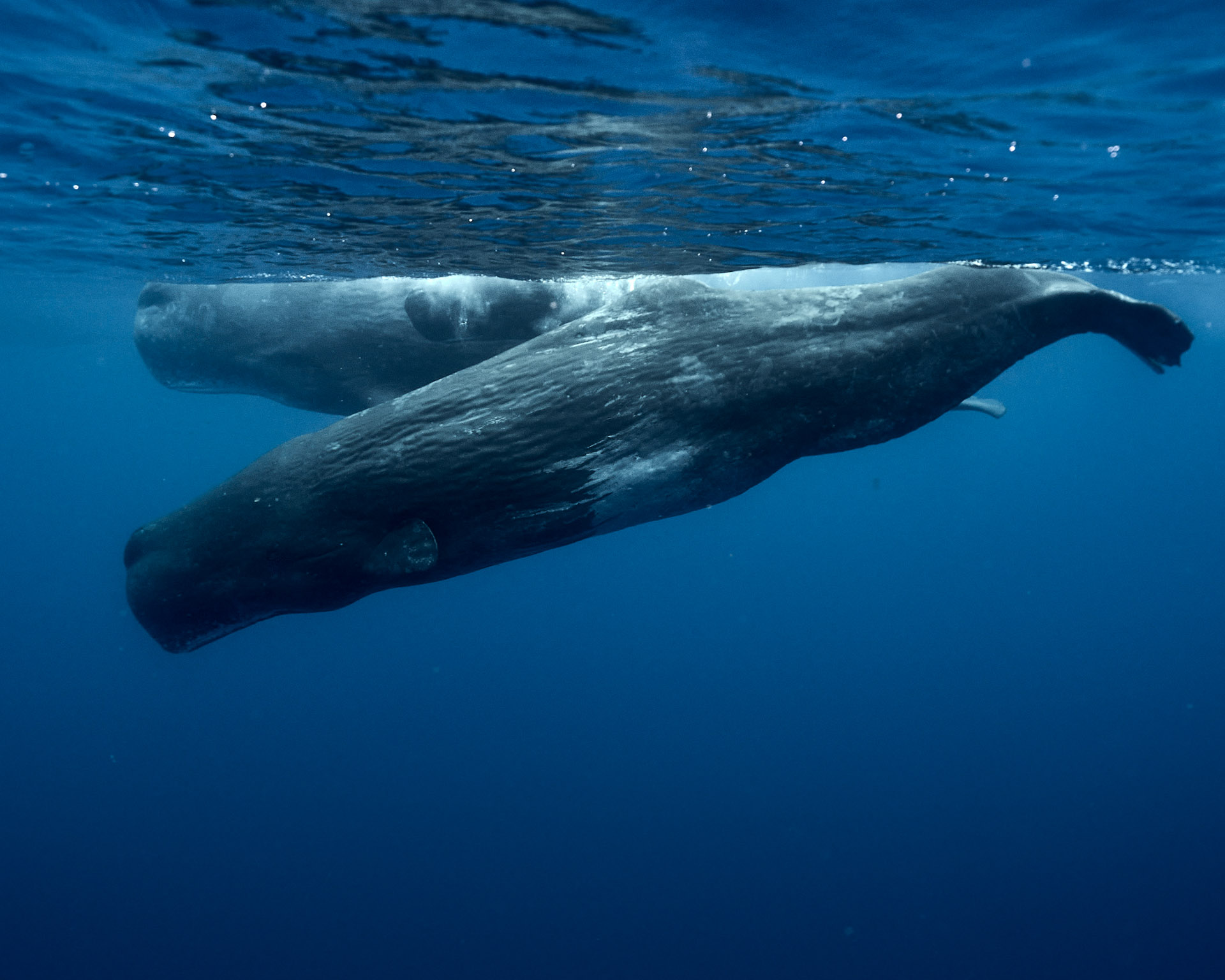
Sperm Whale
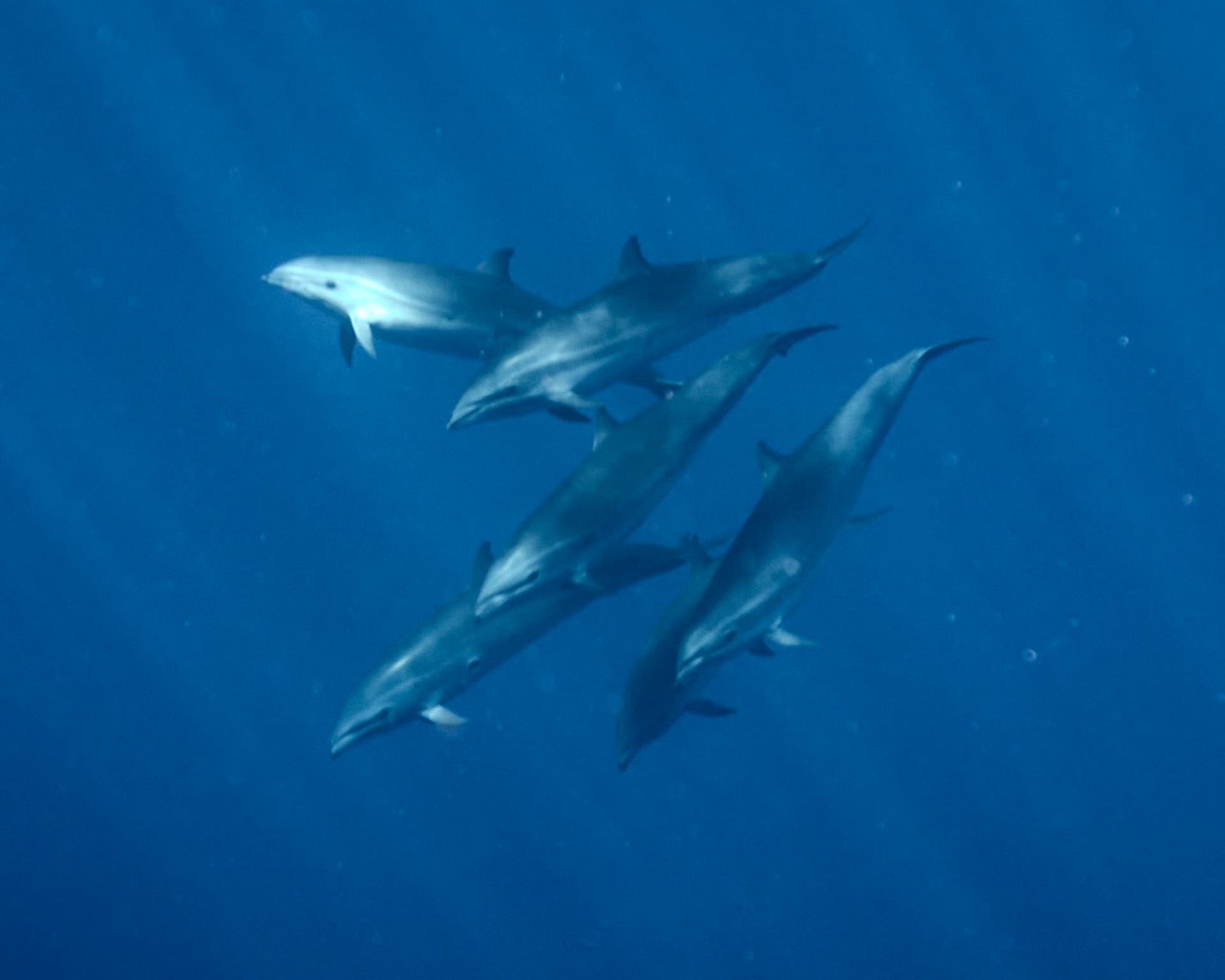
Fraser’s Dolphin
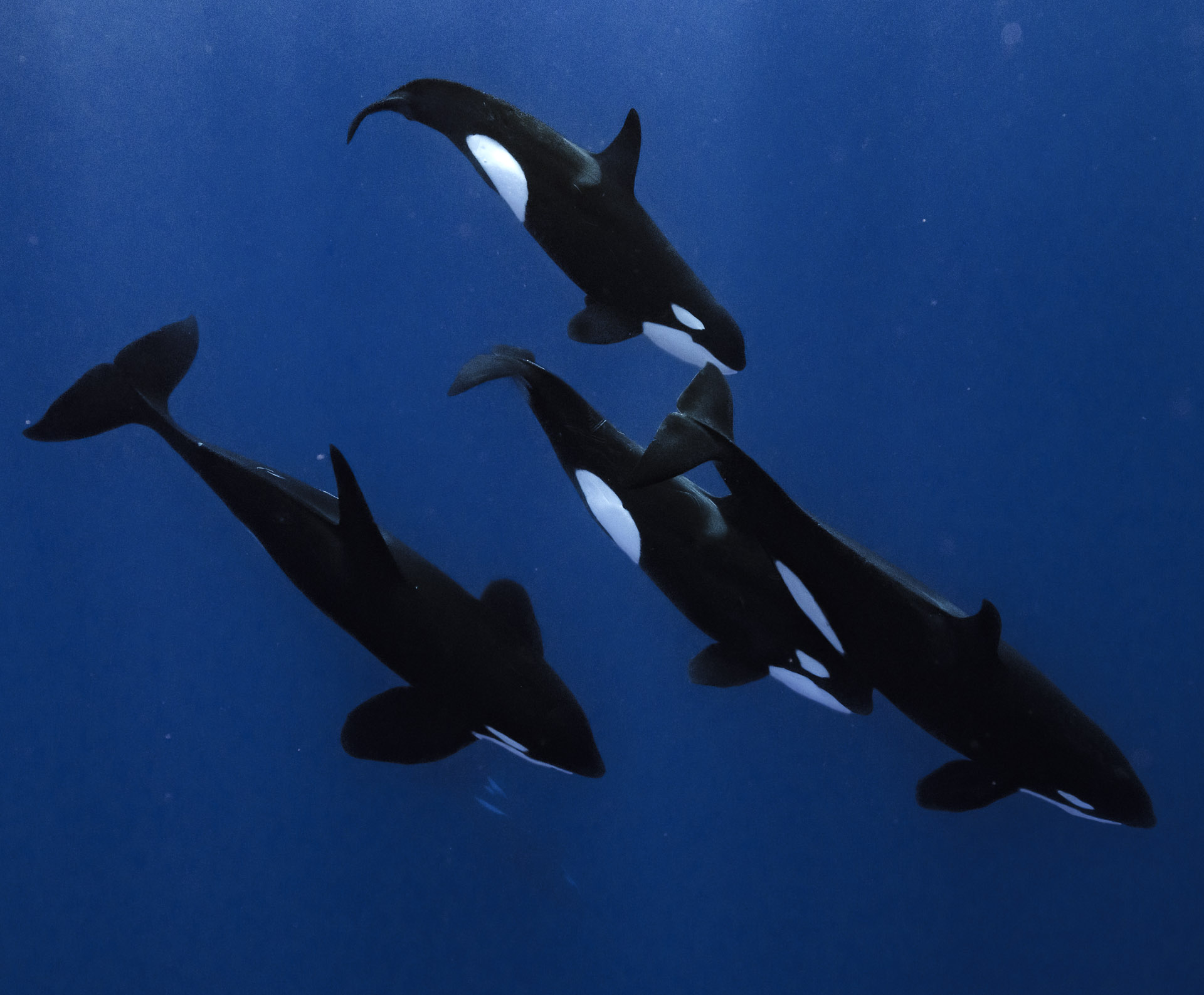
Orca
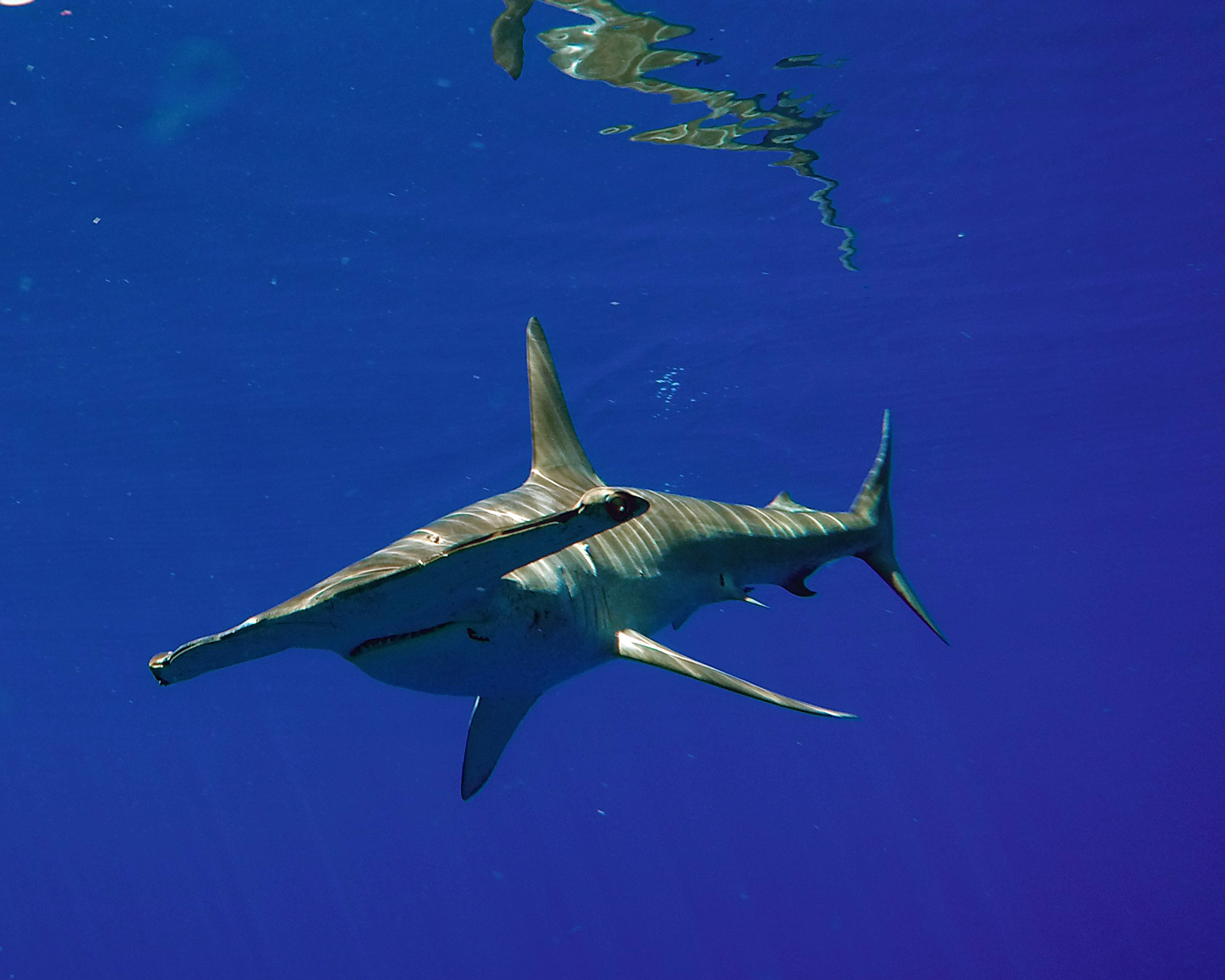
Scalloped Hammerhead Shark
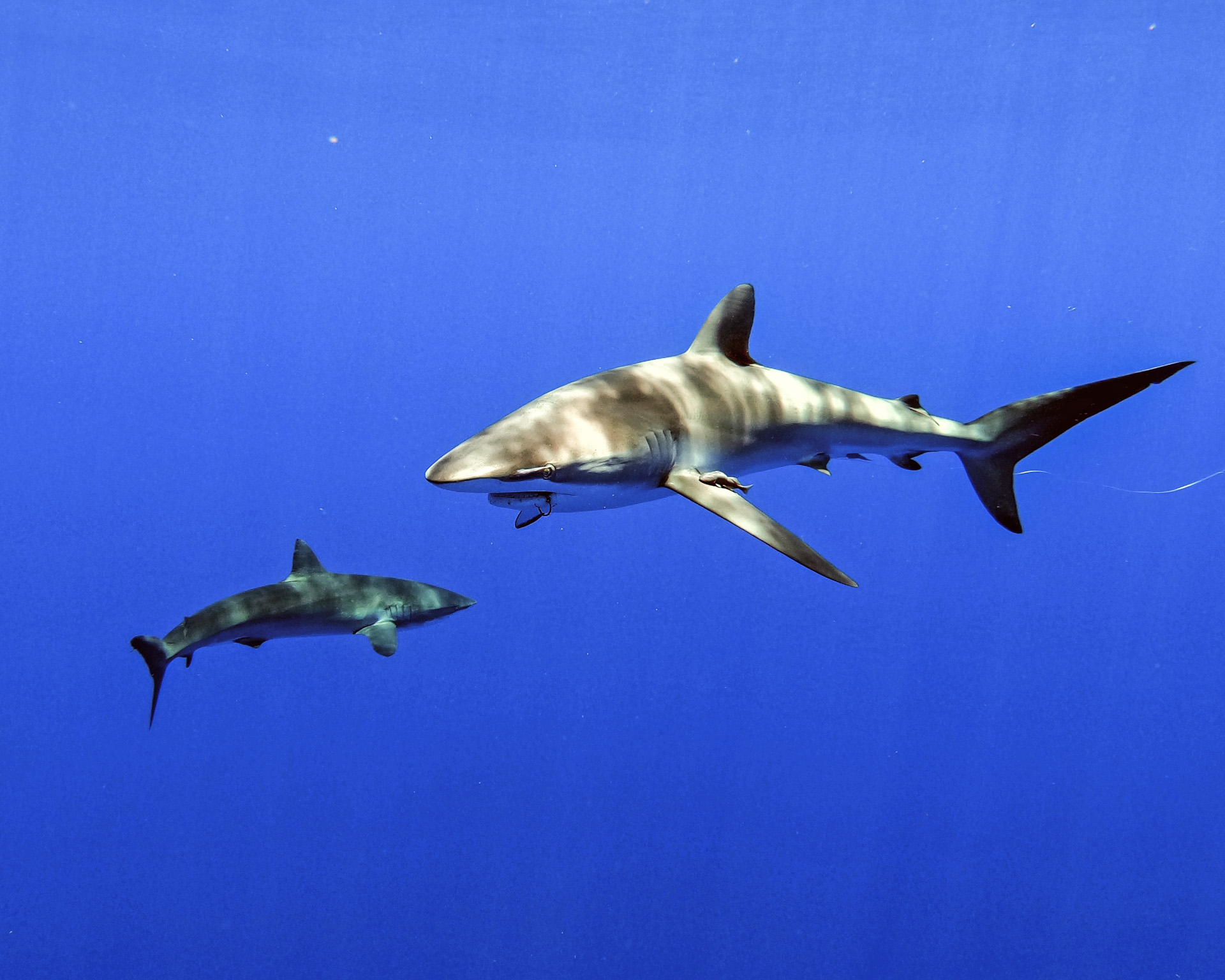
Silky Shark
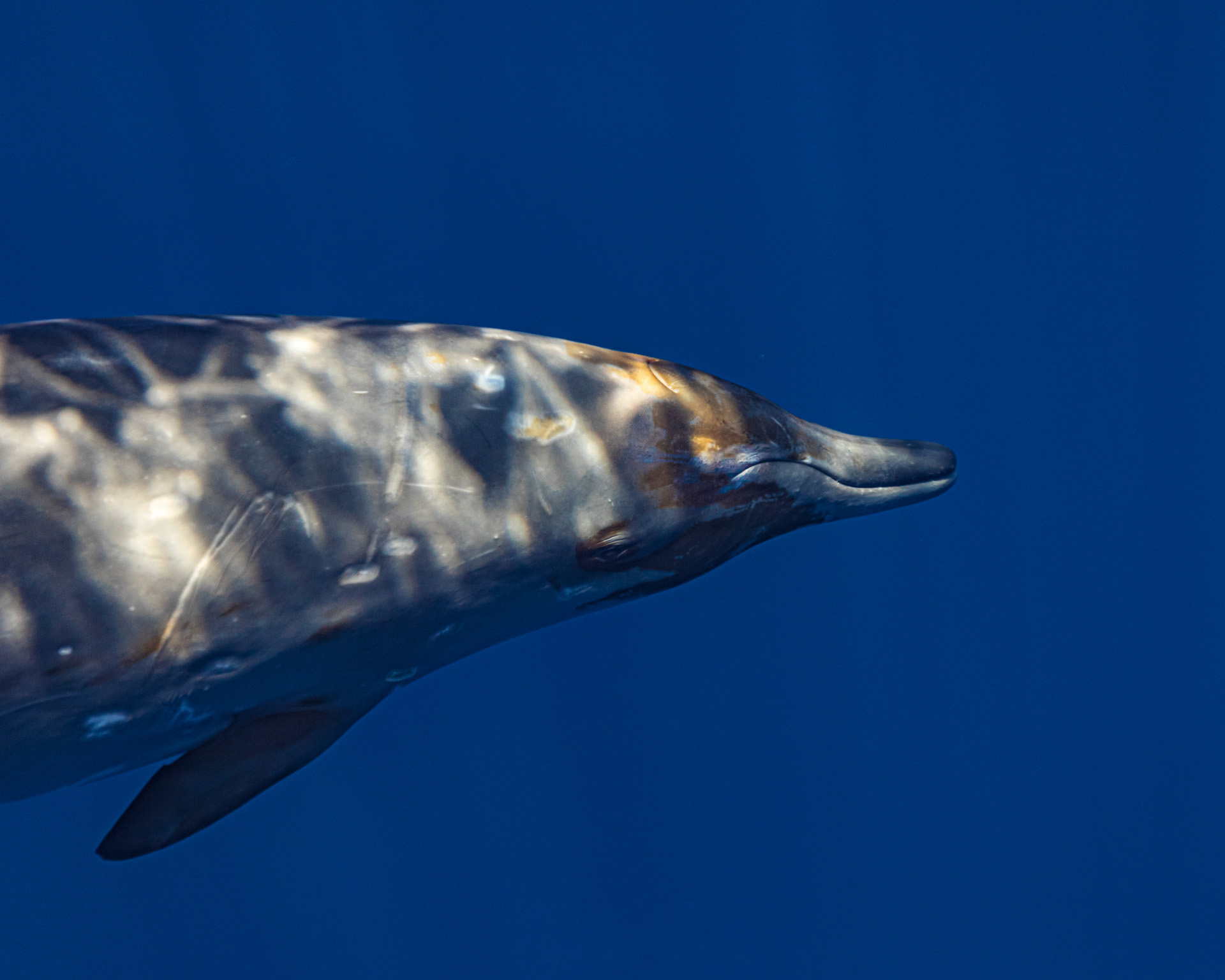
Blainville’s Beaked Whale
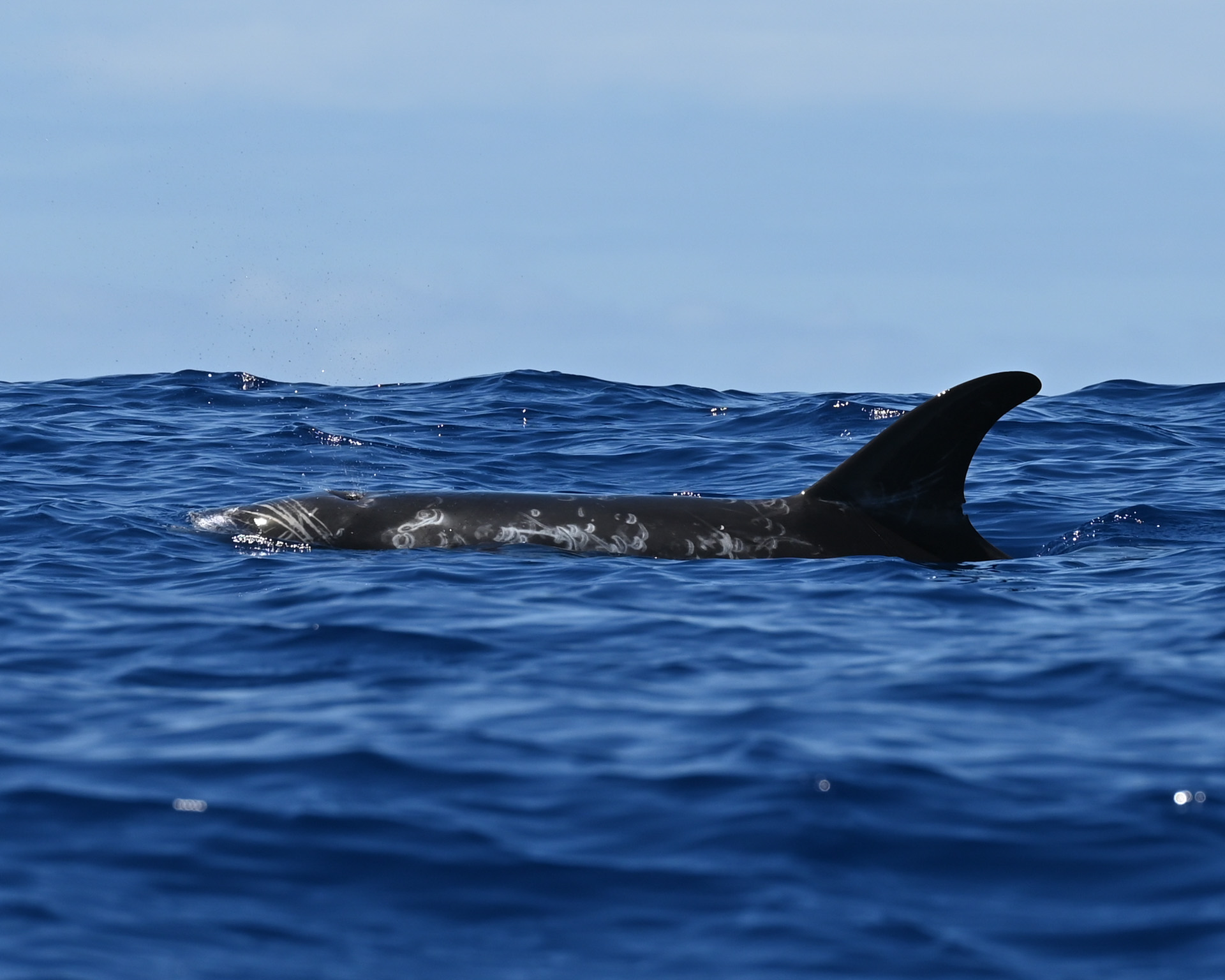
Risso’s Dolphin

Dwarf Sperm Whale
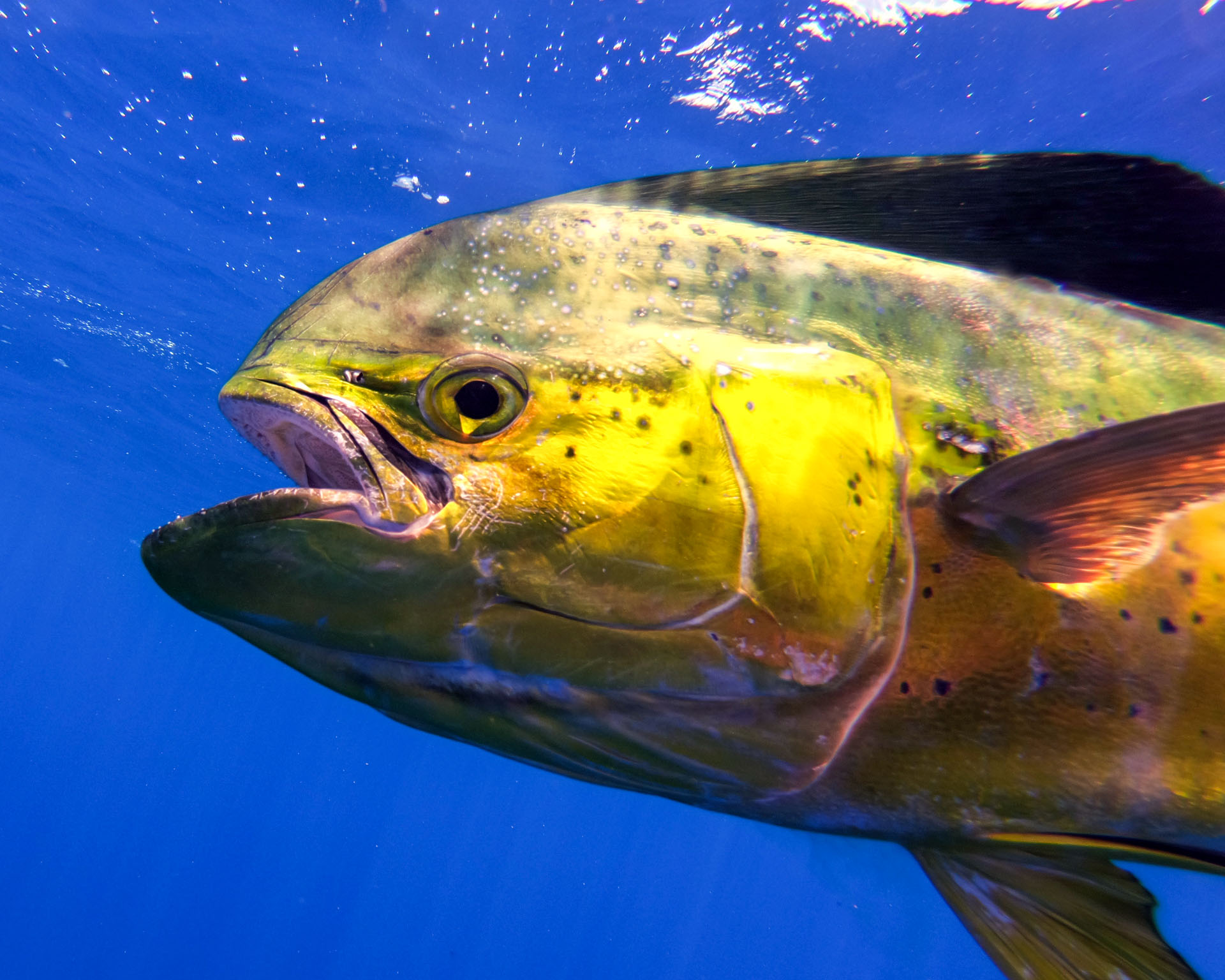
Mahi Mahi
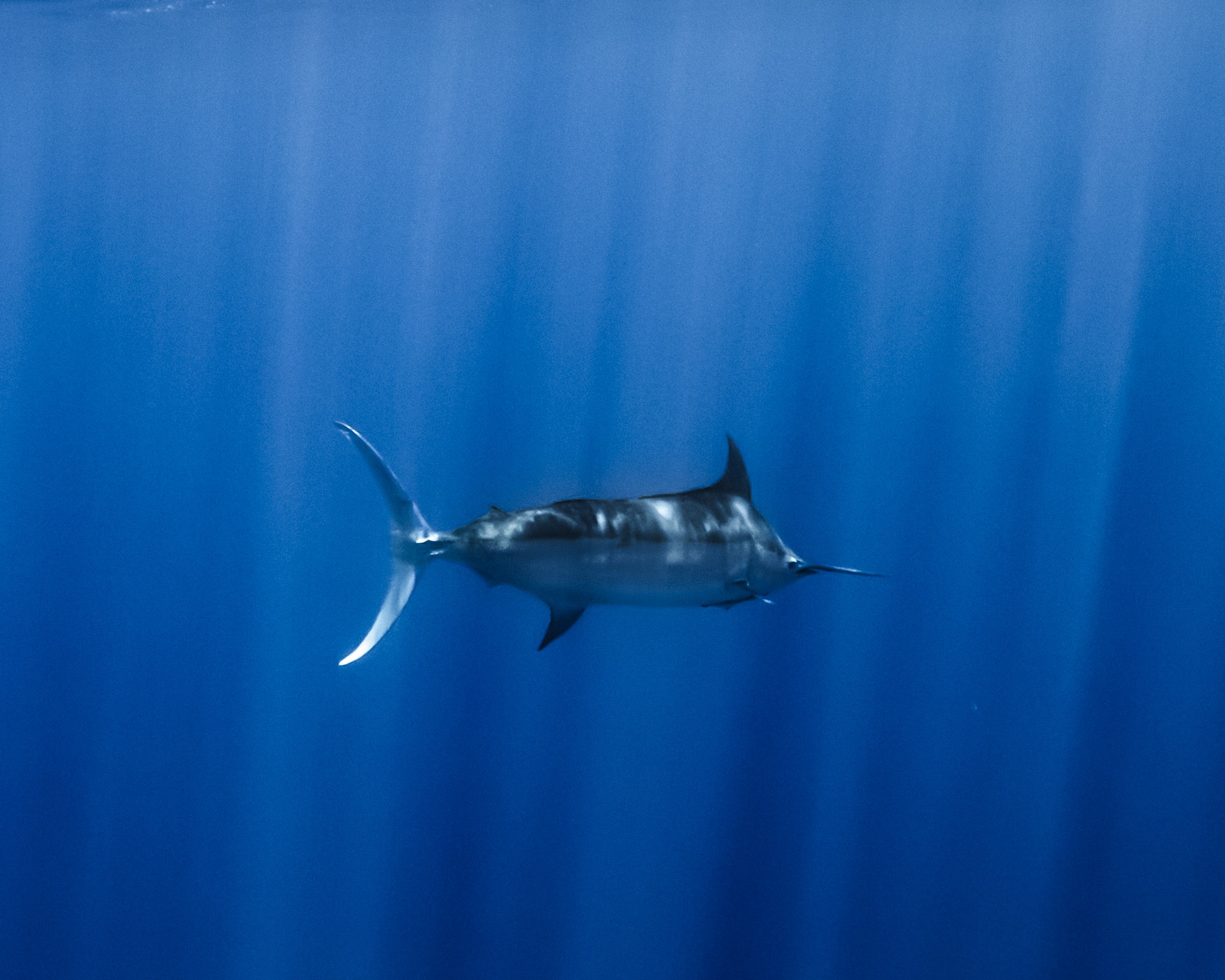
Blue Marlin
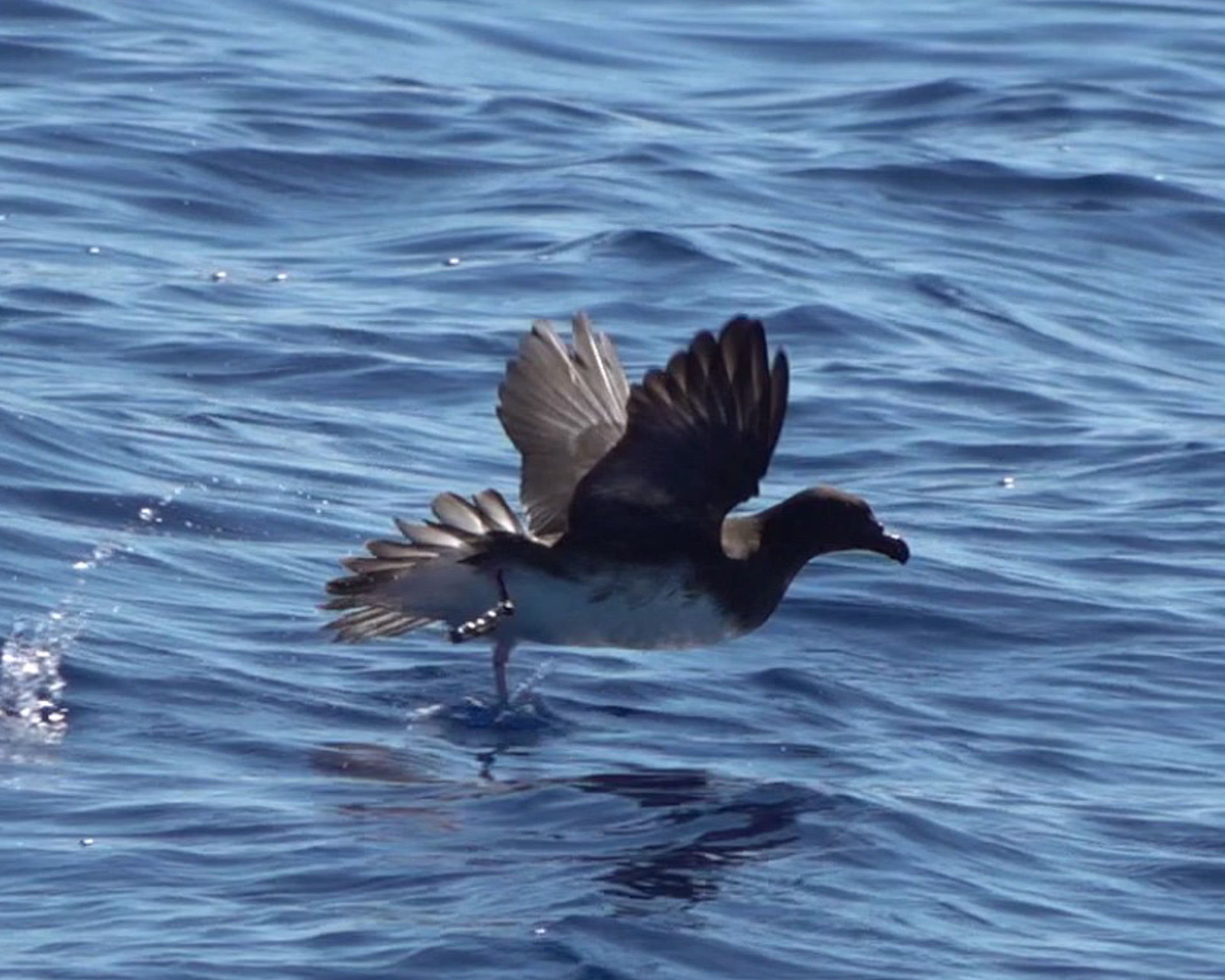
Tahitian Petrel
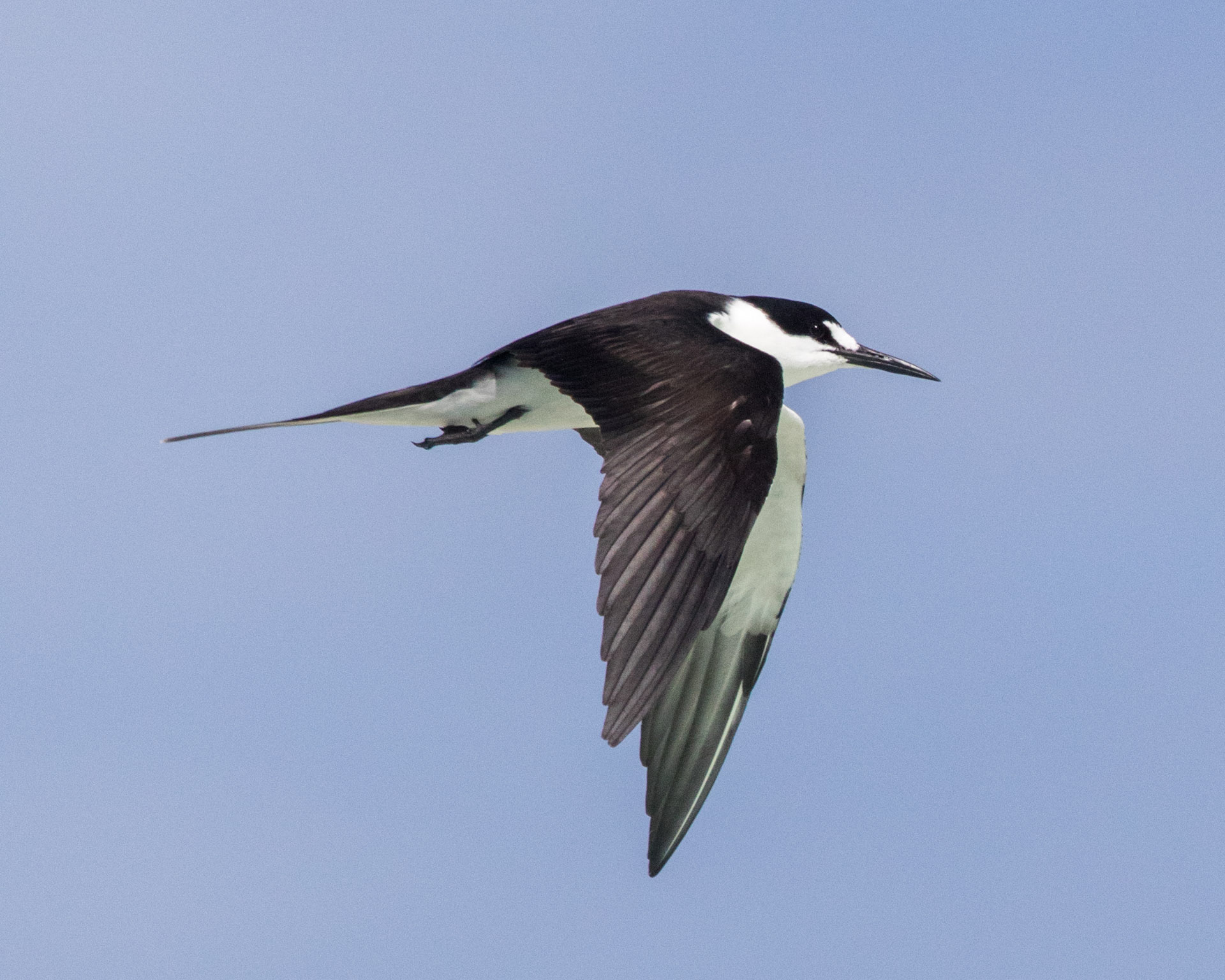
Sooty Tern
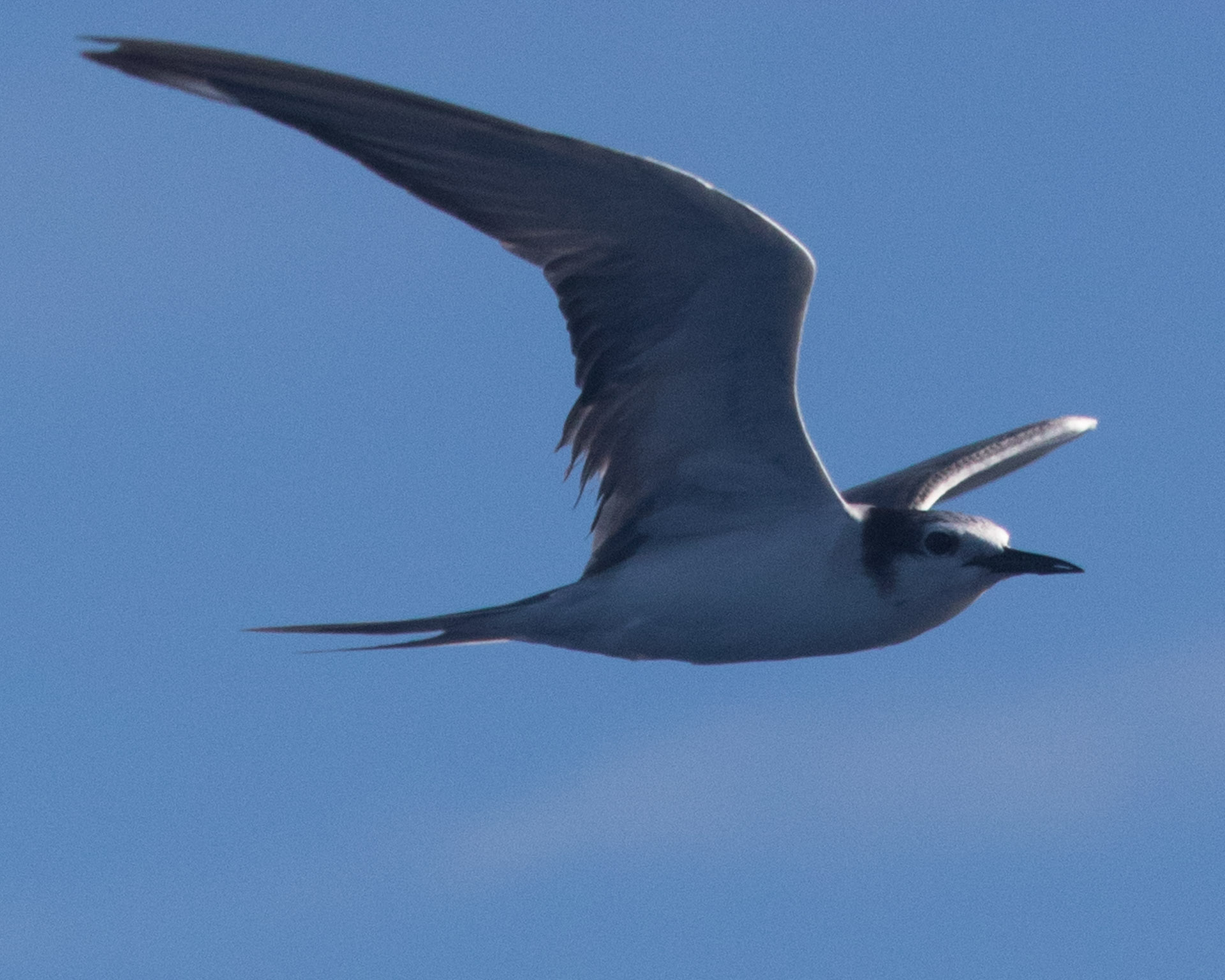
Grey-backed Tern
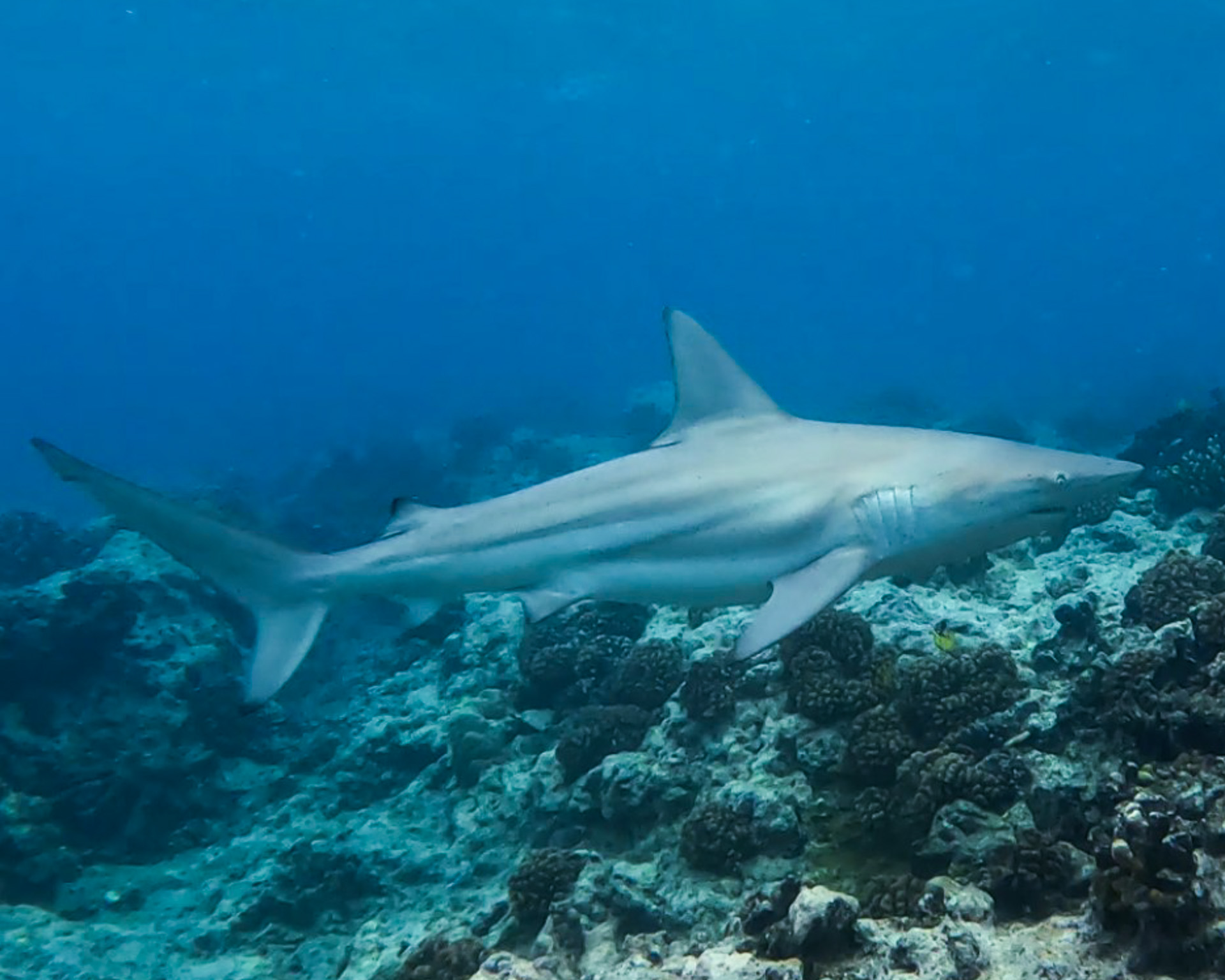
Oceanic Blackfin Shark
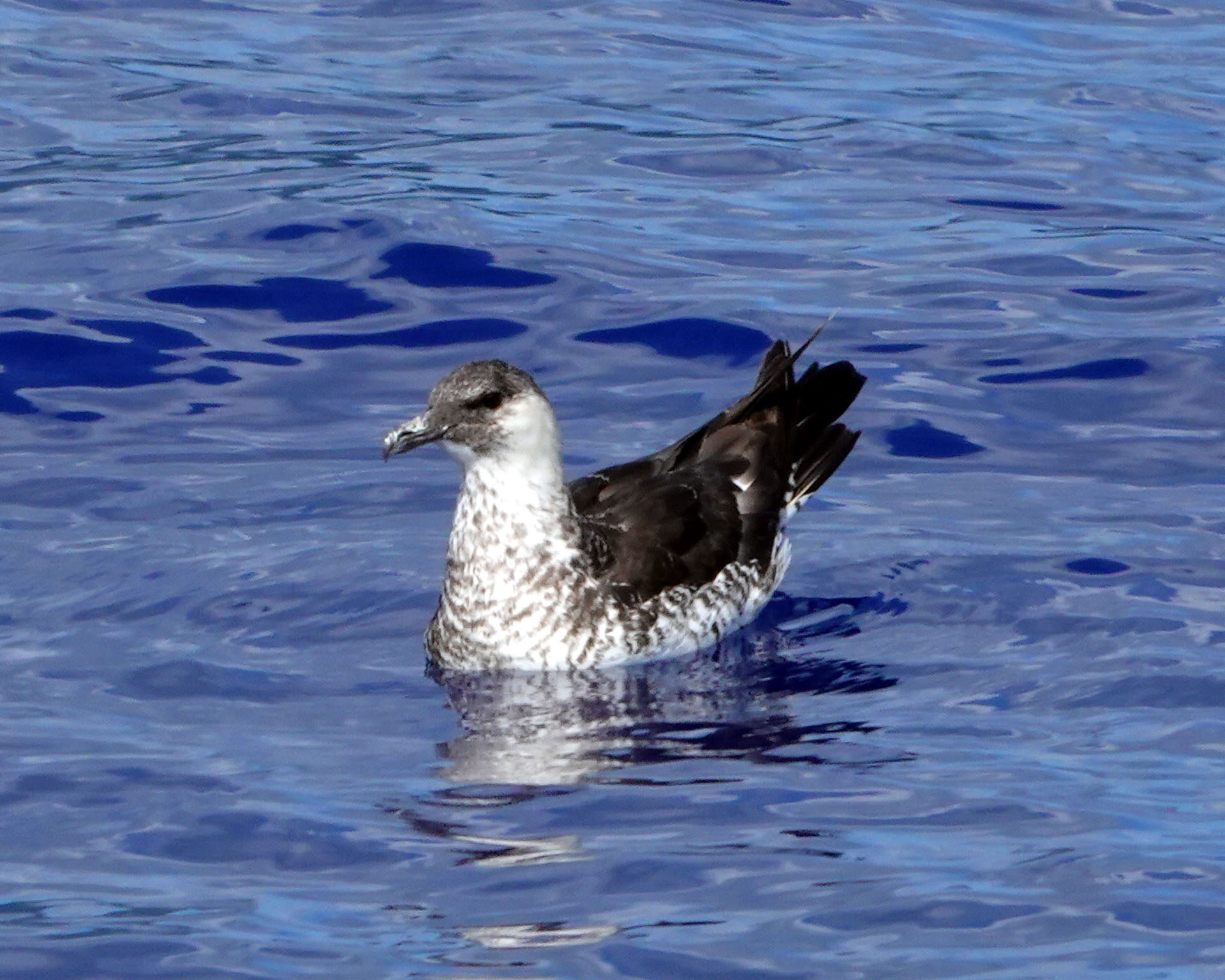
Parasitic Jaeger
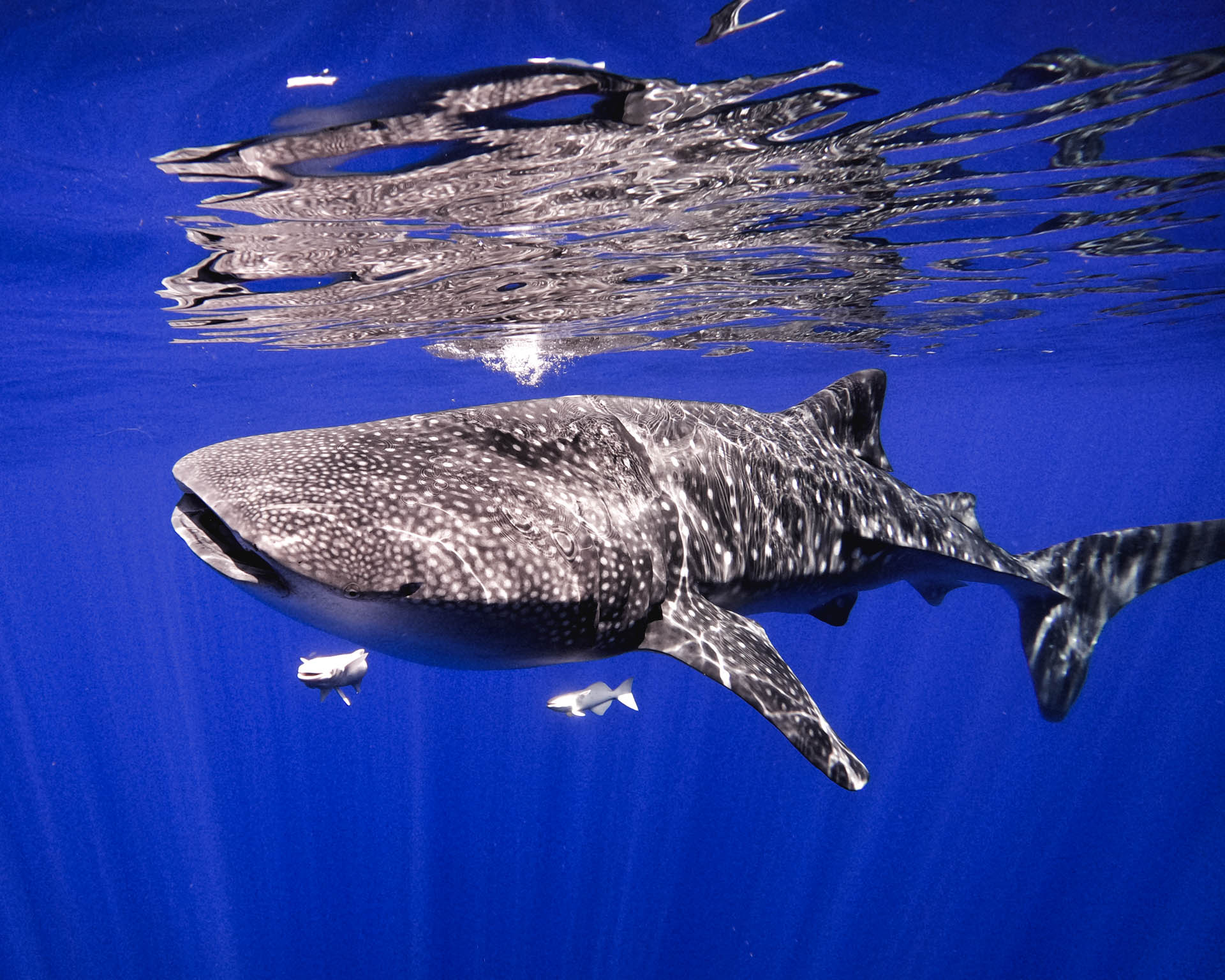
Whale Shark
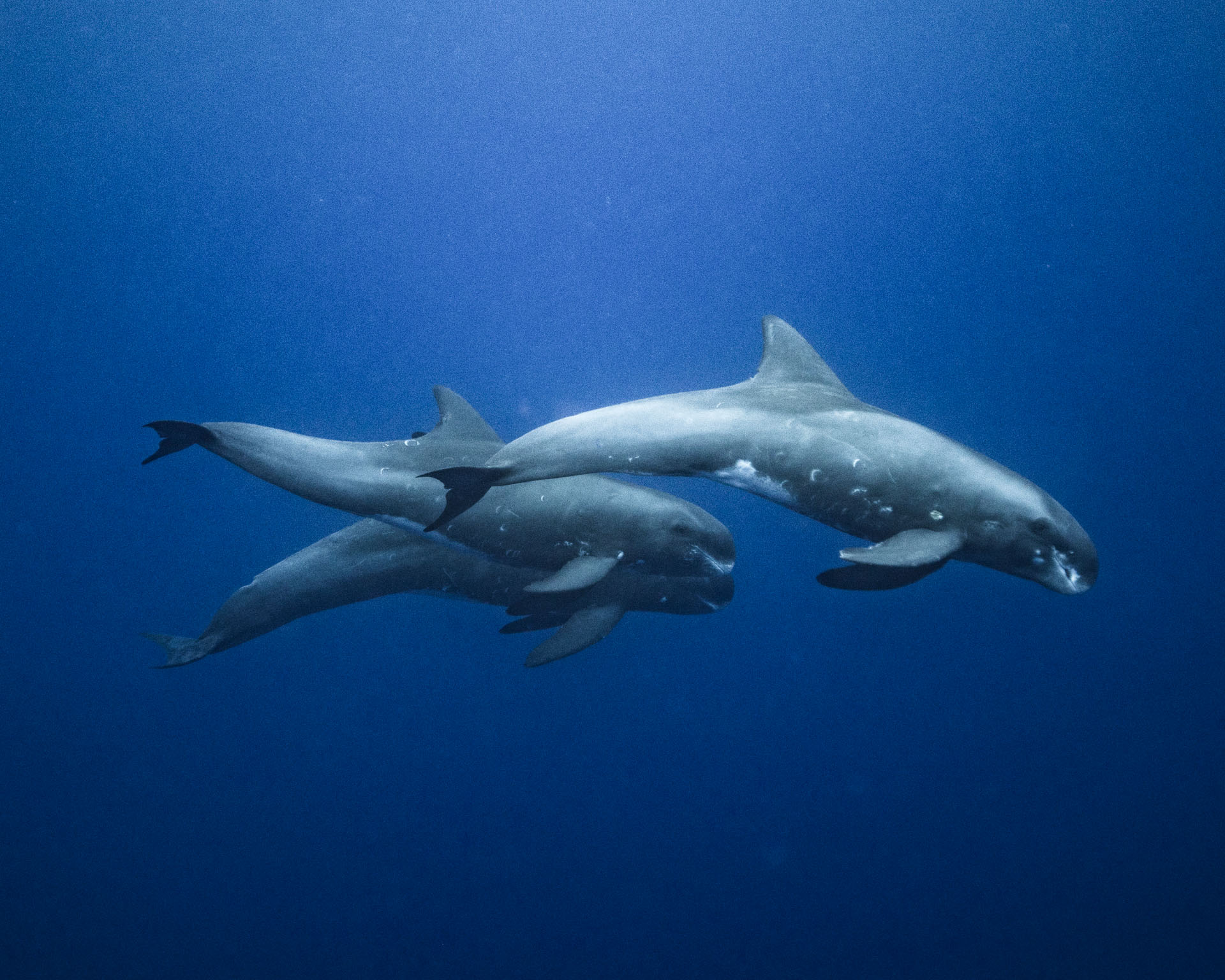
Pygmy Killer Whale
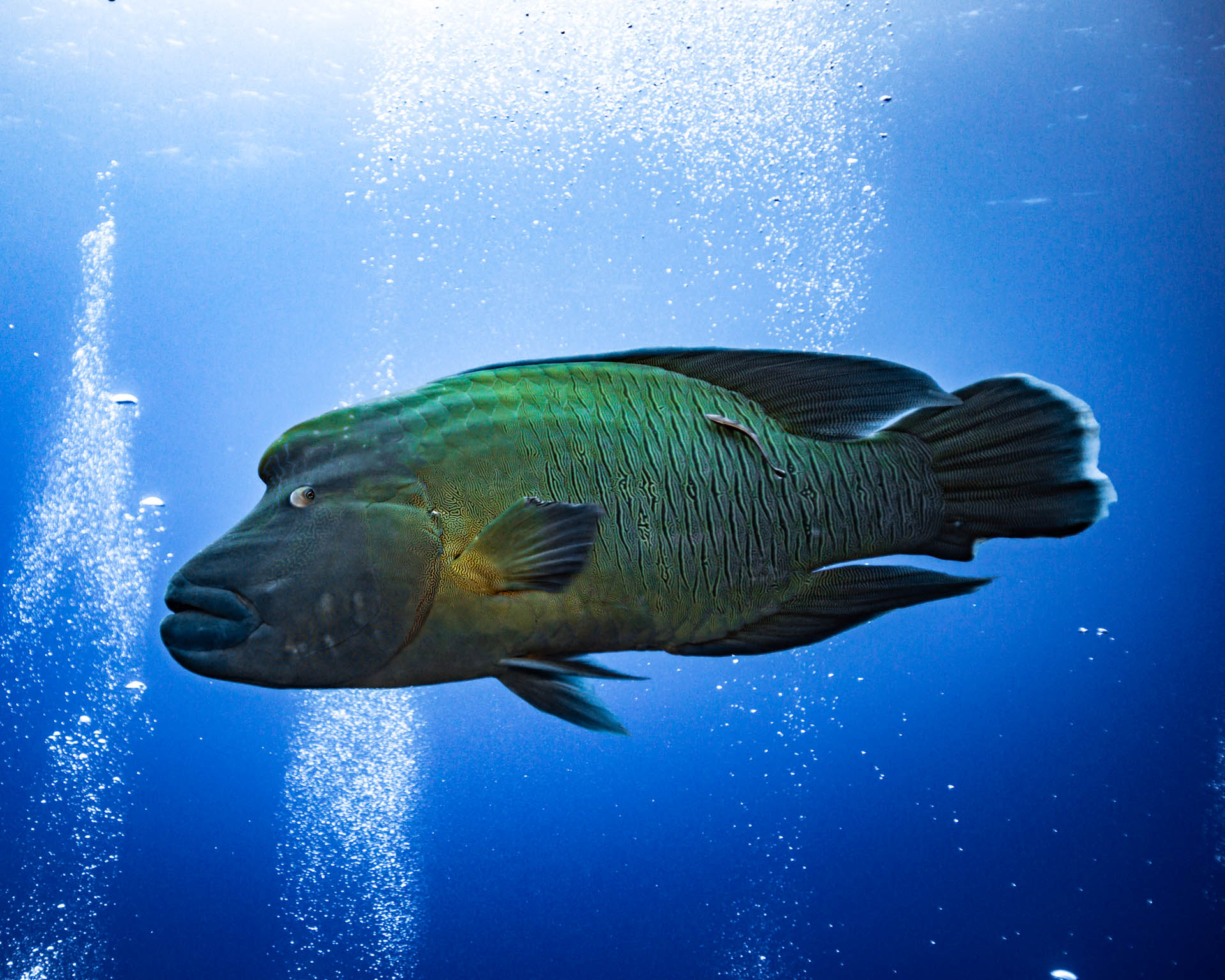
Napoleon Wrasse
Photo credits: Mohea Moana, Joaquin Fregoni, Caine Delacy, Robert King, Alexandre Fellous, Brad Booth, Peter Wilcox, Mai Manceau
